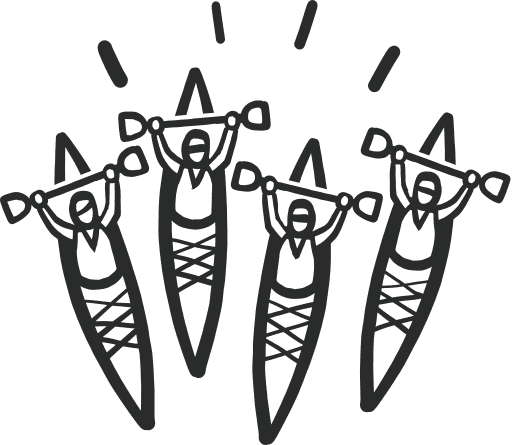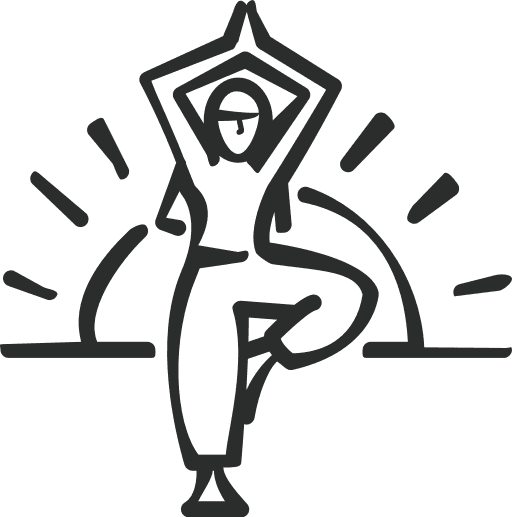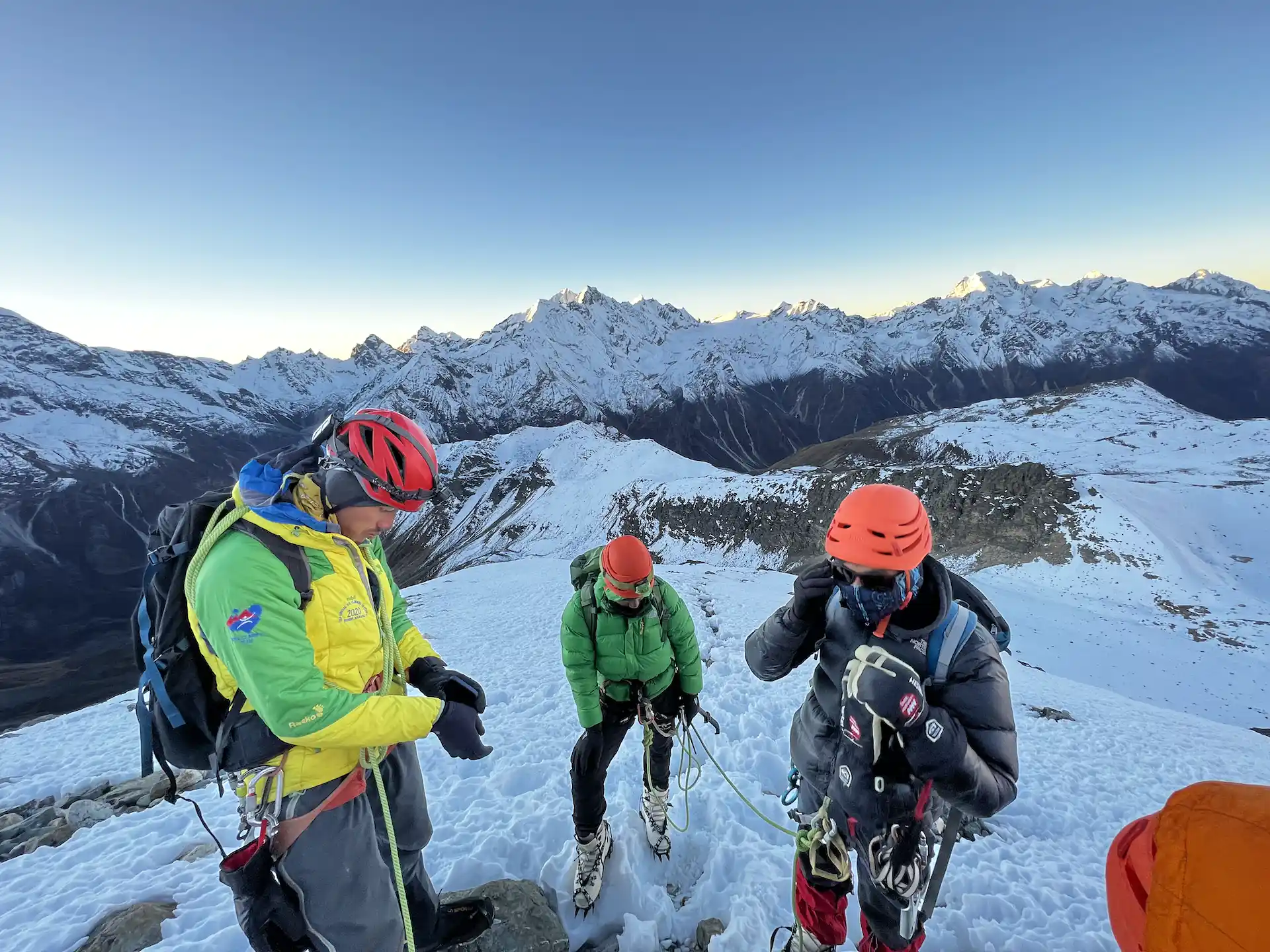
Trek the Langtang Valley to Summit Yala Peak (5500m)
Climb one of the few non-technical peaks in Nepal and experience the mighty Himalaya away from the crowds
What's Included?
Activities & Certified Guides
All itinerary activities with local, expert, English-speaking mountain guidesAll accommodation
2 nights in a hotel in Kathmandu, 8 nights in teahouses along the trail and 1 night campingMeals
3 breakfasts, 2 lunches and 3 dinnersTransfers & porterage
Airport transfers and everything in between; porters will carry your overnight luggage on the trekEquipment, permits & fees
Crampons, ice axe, ropes, helmet and harness will be provided; all your trekking permits and fees are sorted for youSmall Like-minded Groups
Solo-friendly by design, join our small n’ sociable groups of up to 10 like-minded, active and outdoorsy people…
…
What's it like?






























Hike from steamy forest to high-altitude trails in the wildly beautiful Langtang Valley, close to the Tibetan border
Grab your crampons, ropes and ice axe as you navigate the ridge to Yala summit (5500m) on an adventure of a lifetime
Trek among panoramic views of towering peaks and tumbling glaciers in the High Himalaya, including Shishapangma (8027m)
Key Information
Day 1
Arrive in Nepal
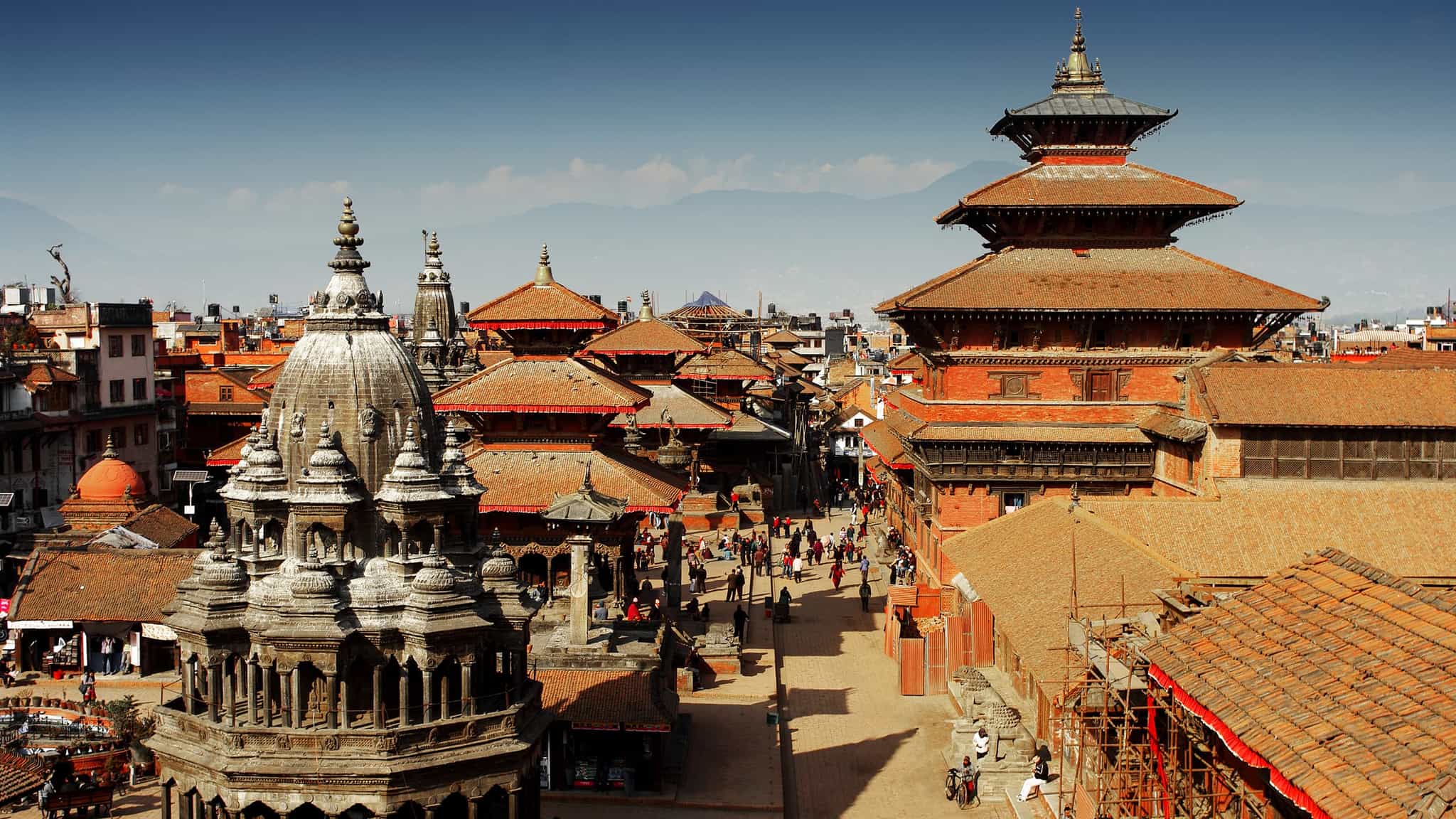
Welcome to Kathmandu! After checking in you'll have a pre-departure meeting with your guides to run through the plans for the trek. You'll finish the day with a group dinner to get to know your team for the next couple of weeks.
2026 Itinerary Update: From 01 January 2026 onwards, this trip will be one day longer (12 nights/13 days) than is currently displayed on this page. The 2026 and 2027 departure dates listed already reflect the longer duration. For further details, please refer to the FAQ 'What's the itinerary update from 2026 onwards?'.
Day 2
Roadtrip to Syabrubesi
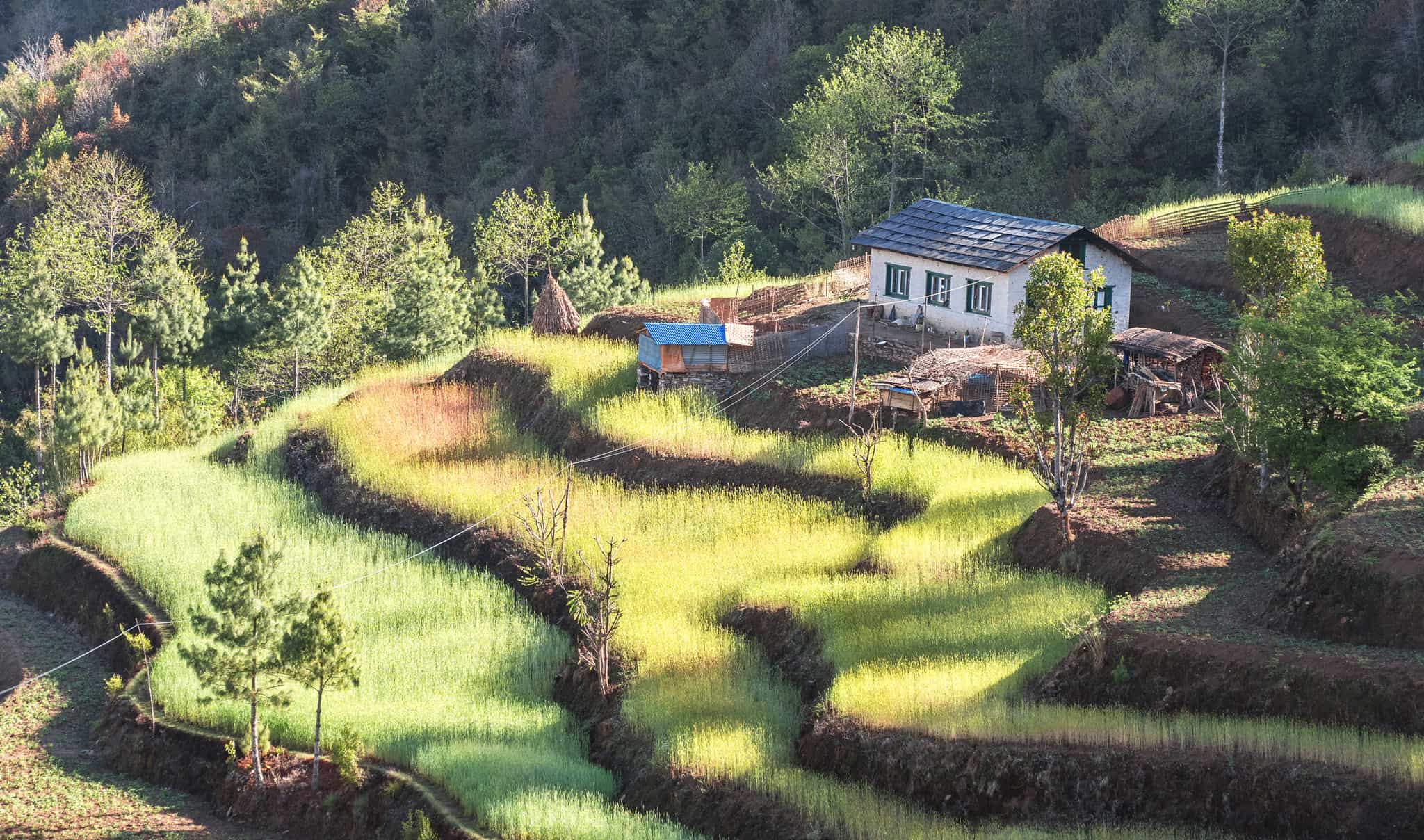
Driving
Bidding goodbye to Kathmandu, you'll hop on a bus for a bone-rattling journey to Syabrubesi – the set-off point for the trek ahead. The journey will take approximately seven hours, but there's plenty to look at as you drive along the scenic banks of Trishuli River with beautiful views of valleys, meadows, rivers, and mountains. You'll make a stop at Dhunche to have your permits checked before bedding down in a teahouse in the village of Syabrubesi.
Day 3
Through the forest to Lama Teahouse via Bamboo
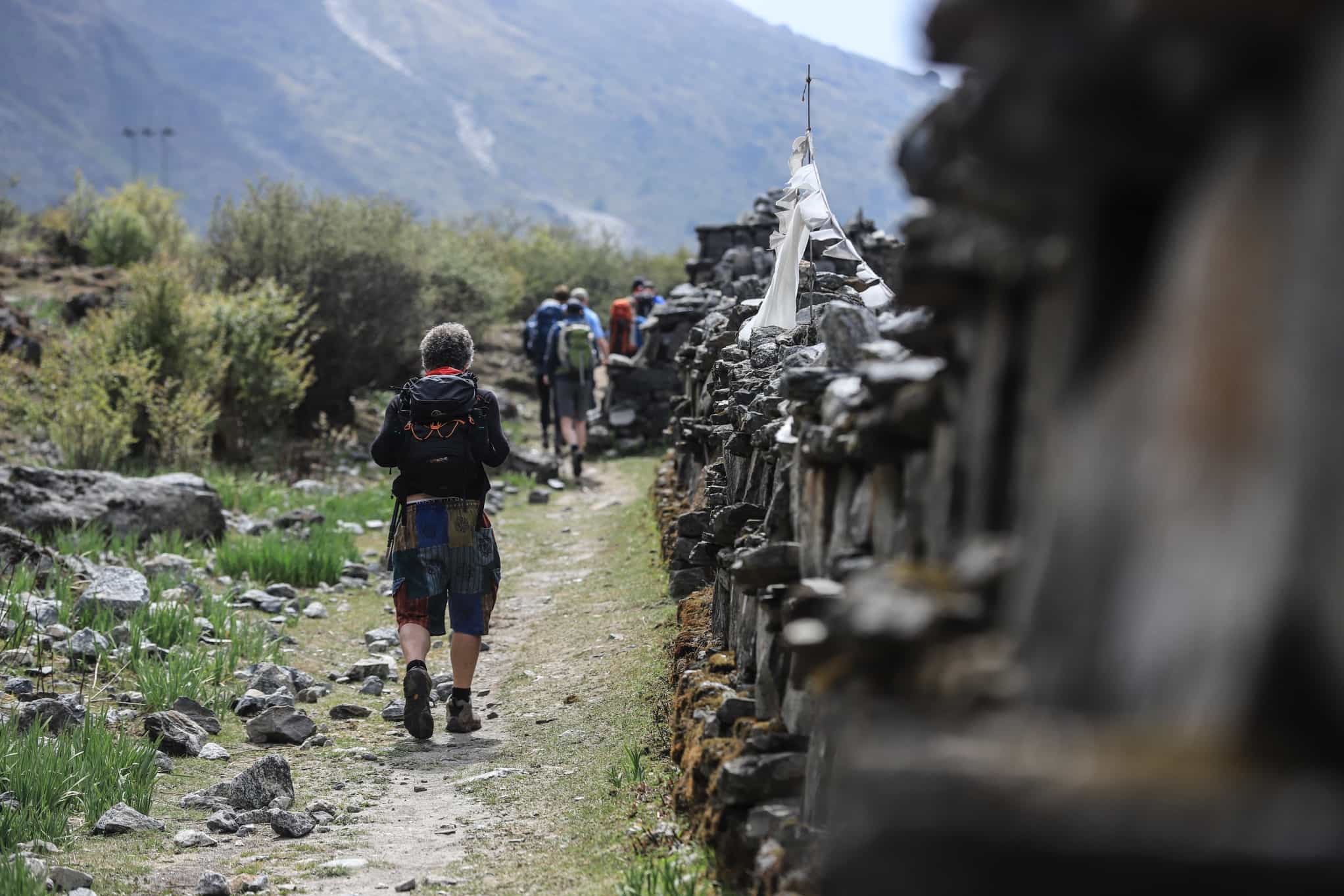
Hiking
Time to lace up your hiking boots up and hit the trail. The gently undulating track weaves up and over the Bhote River suspension bridge through dense forest and past Langtang Khola. Passing through the hamlet of Bamboo, keep your eyes peeled for red panda – these elusive creatures can sometimes be spotted in the forest. You can expect a few glimpses of snow-covered peaks but today is mostly about the river, forests, rocky stairs and a few bridge crossings. Although the elevation is not high yet (below 2500m), the humid temperature will make the hike a sweaty one and test your stamina for the challenge ahead.
Day 4
To Langtang village
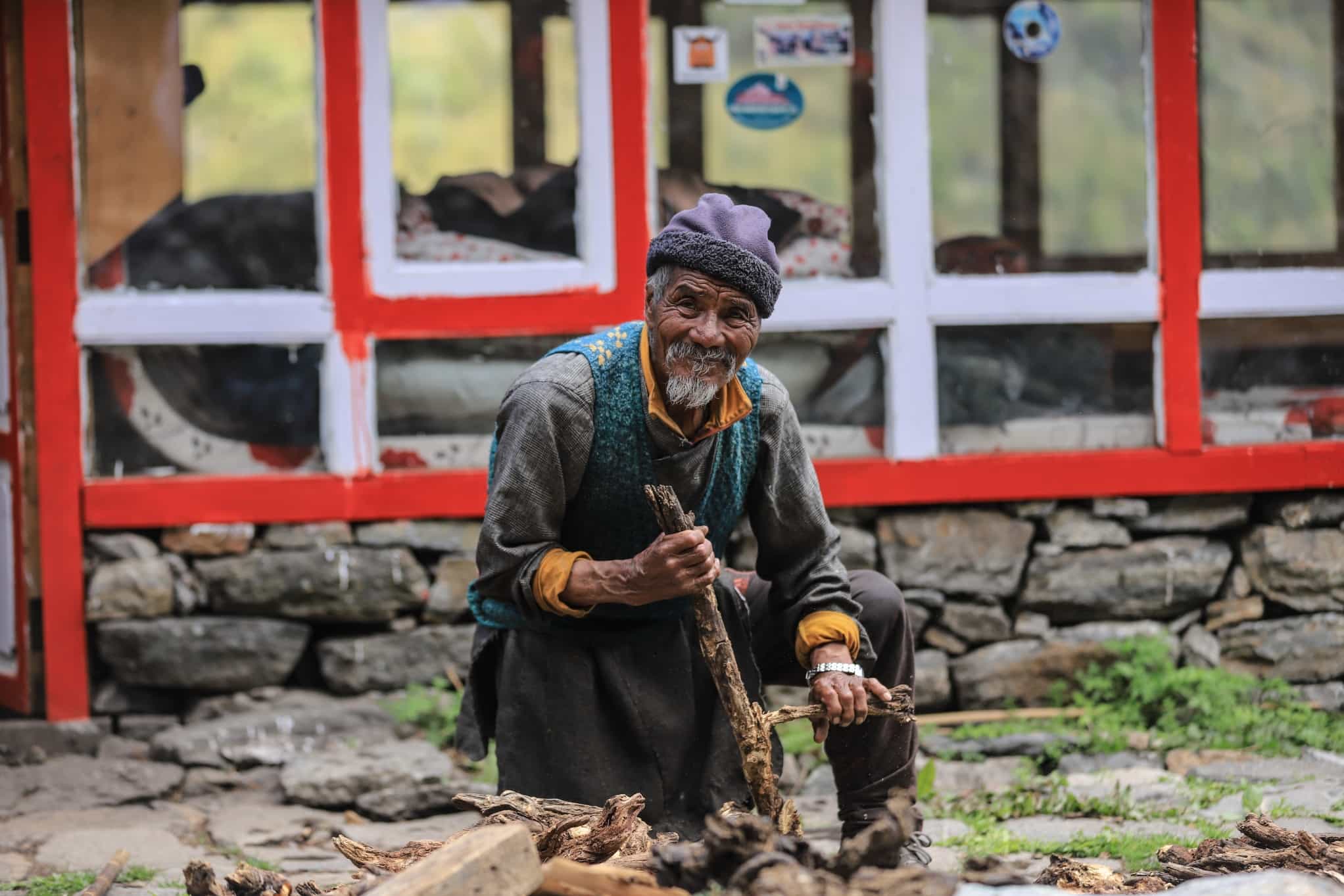
Hiking
Start the day with a walk through beautiful wild forests of hemlock, oak and huge rhododendron, with snow-capped peaks beginning to appear in the distance. After a steady climb, you'll pass the army checkpoint at Ghodatabela before reaching Langtang village. This sombre spot was one of the worst-hit areas when the earthquake hit in 2015 and is still being rebuilt – income from tourism is fundamental to its recovery.
Day 5
Stomp on to Kyanjin Gompa
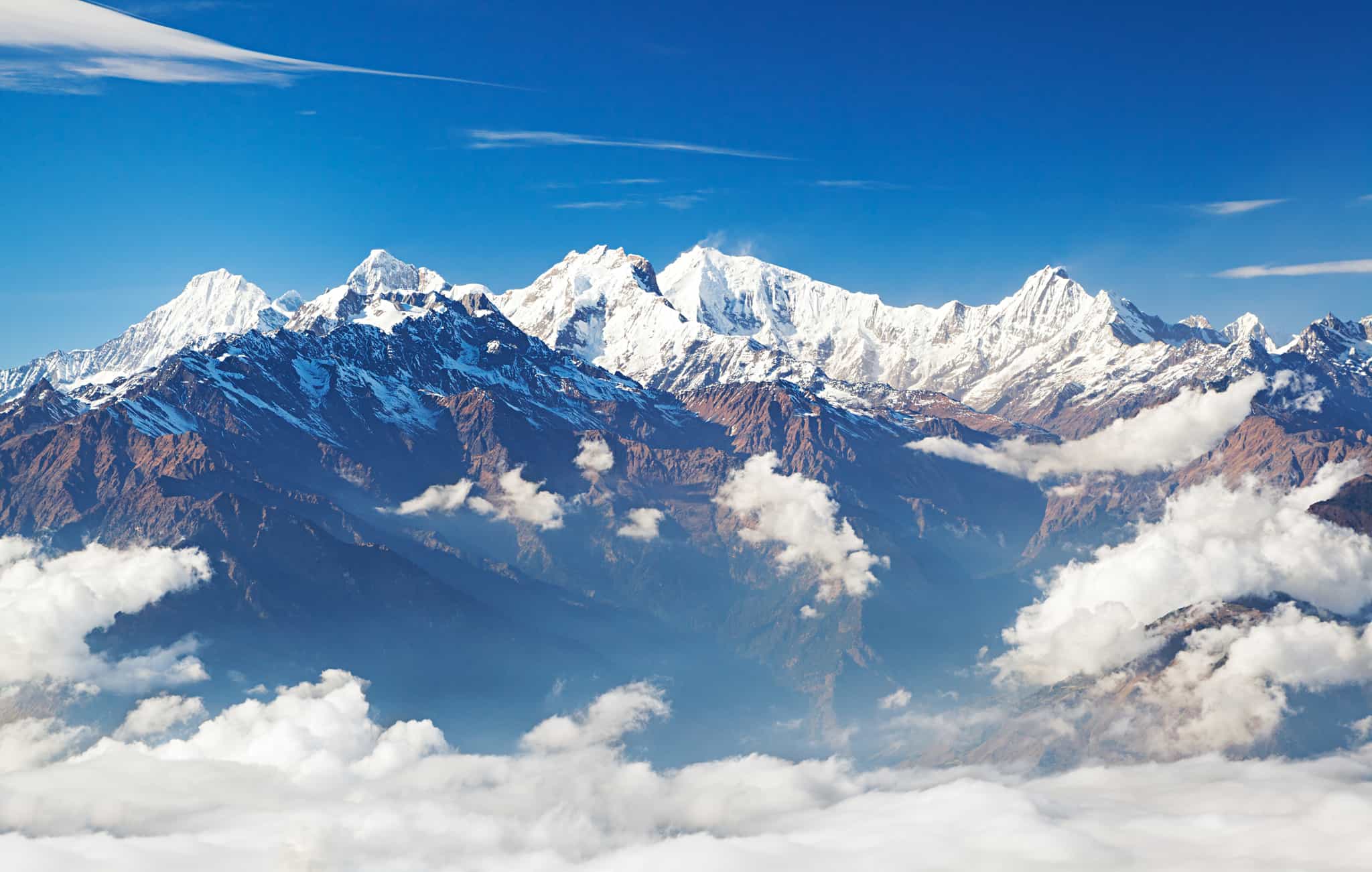
Hiking
Leaving Langtang behind, the trail crosses yak pastures and follows a meandering stream. Gengchempo (6387m) is a prominent landmark off to the east and your first sight of a mighty peak. The trail reaches the Tamang settlements of Mundu (3410m) and Sindum (3410m) flanked by equally spectacular peaks, as the full Langtang range makes an appearance. Time for some dal bhat at your teahouse in Kyanjin Gompa to end the day.
Day 6
The Kyanjin Gompa loop
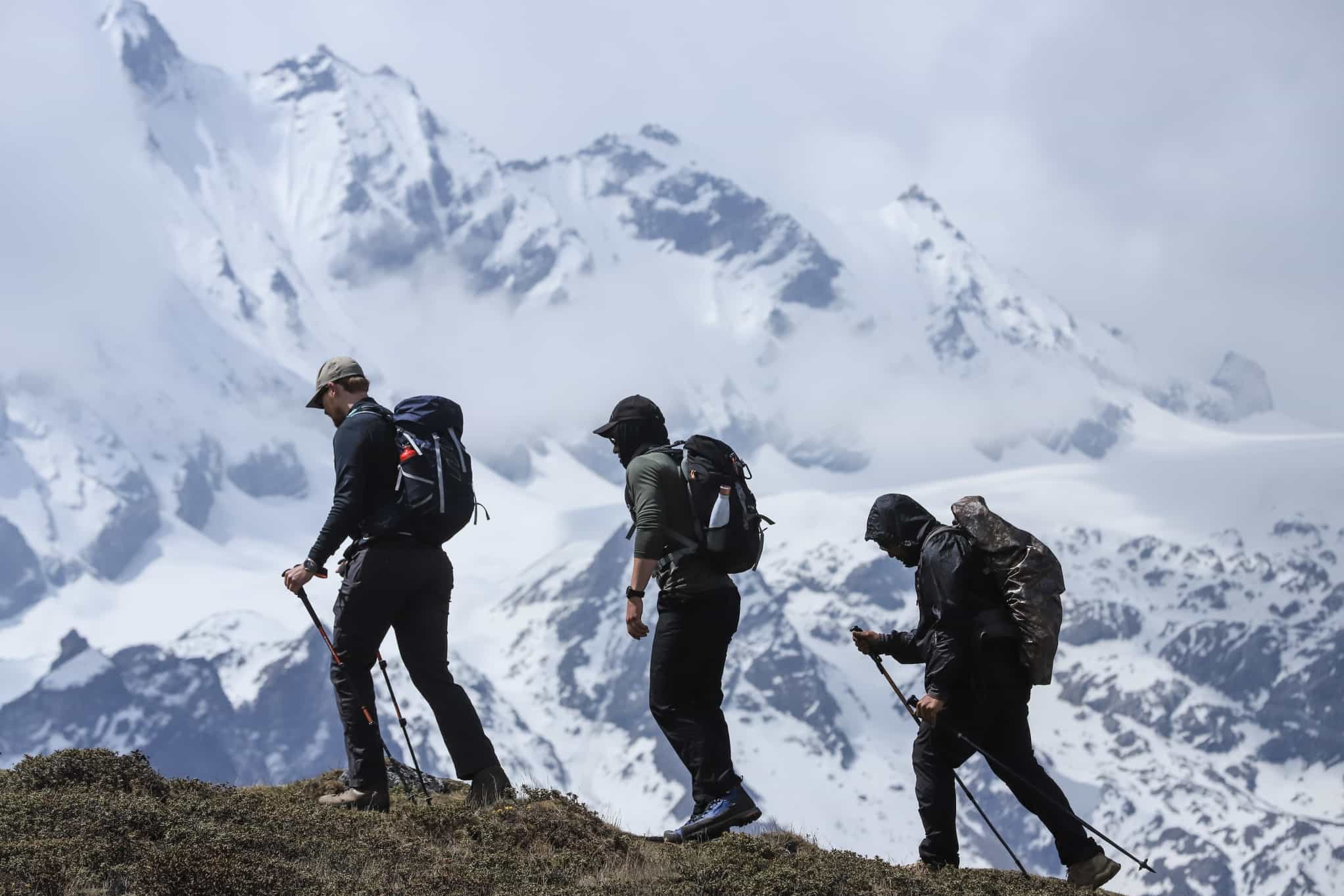
Hiking
No need to pack up this morning as you'll return to the same spot this evening. Today is a relatively easy day as you acclimatise to being at altitude (currently at 3830m). You can wander to a monastery, visit a local cheese factory or walk up the moraine to see the spectacular ice faces and tumbling glaciers of Langtang Lirung. For those with energy to burn, your guide can also take you up Kyanjin Ri (4773m) for a breathtaking panorama of the Langtang peaks. Overnight at Kyanjin Gompa, don't forget to look up at the stars!
Day 7
To Yala Base Camp
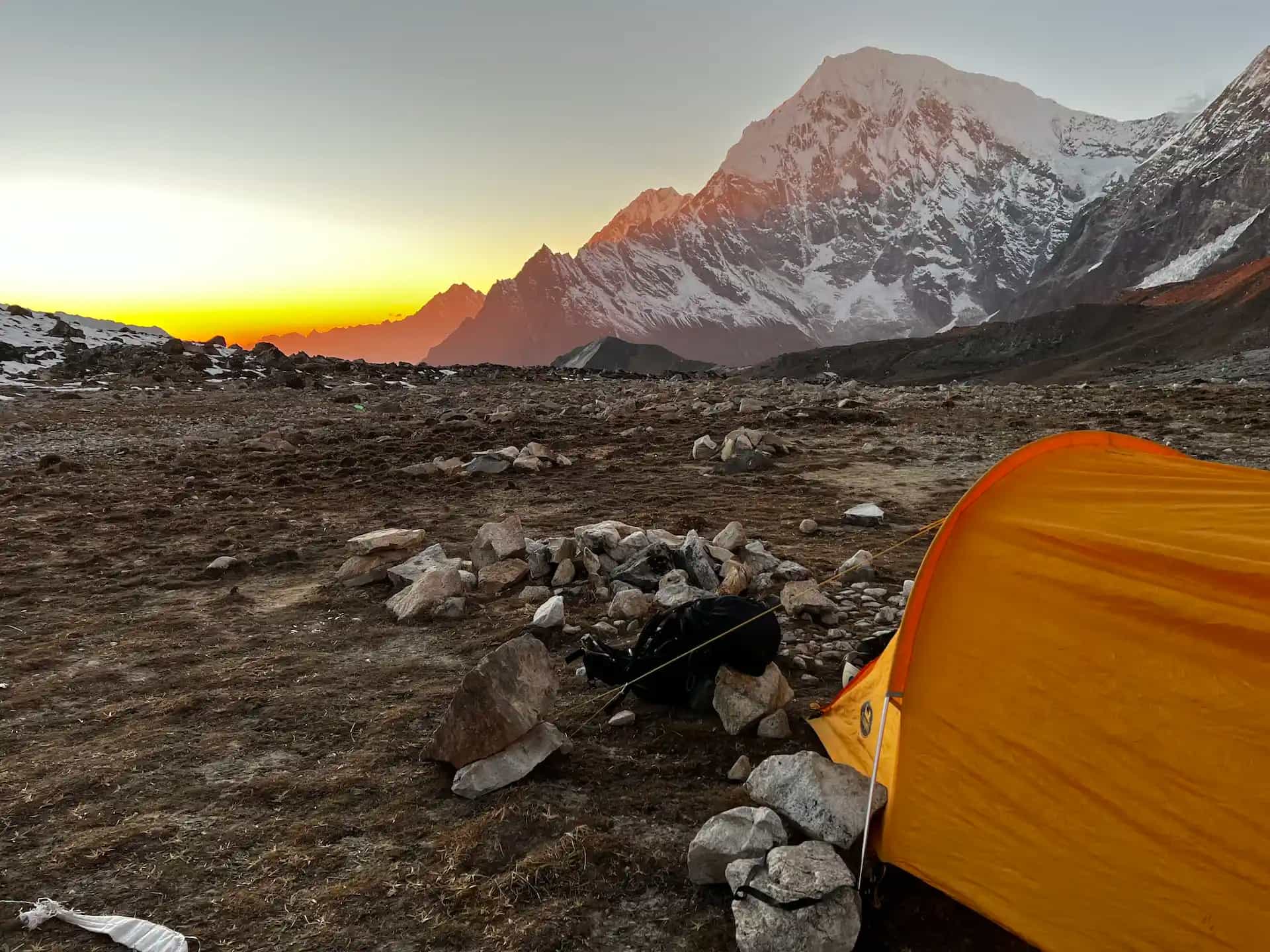
Hiking
Leaving behind the last settlement you'll see for a couple of days, you'll start to trek along the rocky glacial trail. You'll arrive at base camp (4600m) mid-afternoon with plenty of time to settle in, grab a hot drink and marvel at the peak above. Sunset this high up is something to behold, and worth checking out before you gather together in the mess tent for a hearty meal prepared by your crew.
Day 8
Summit day!
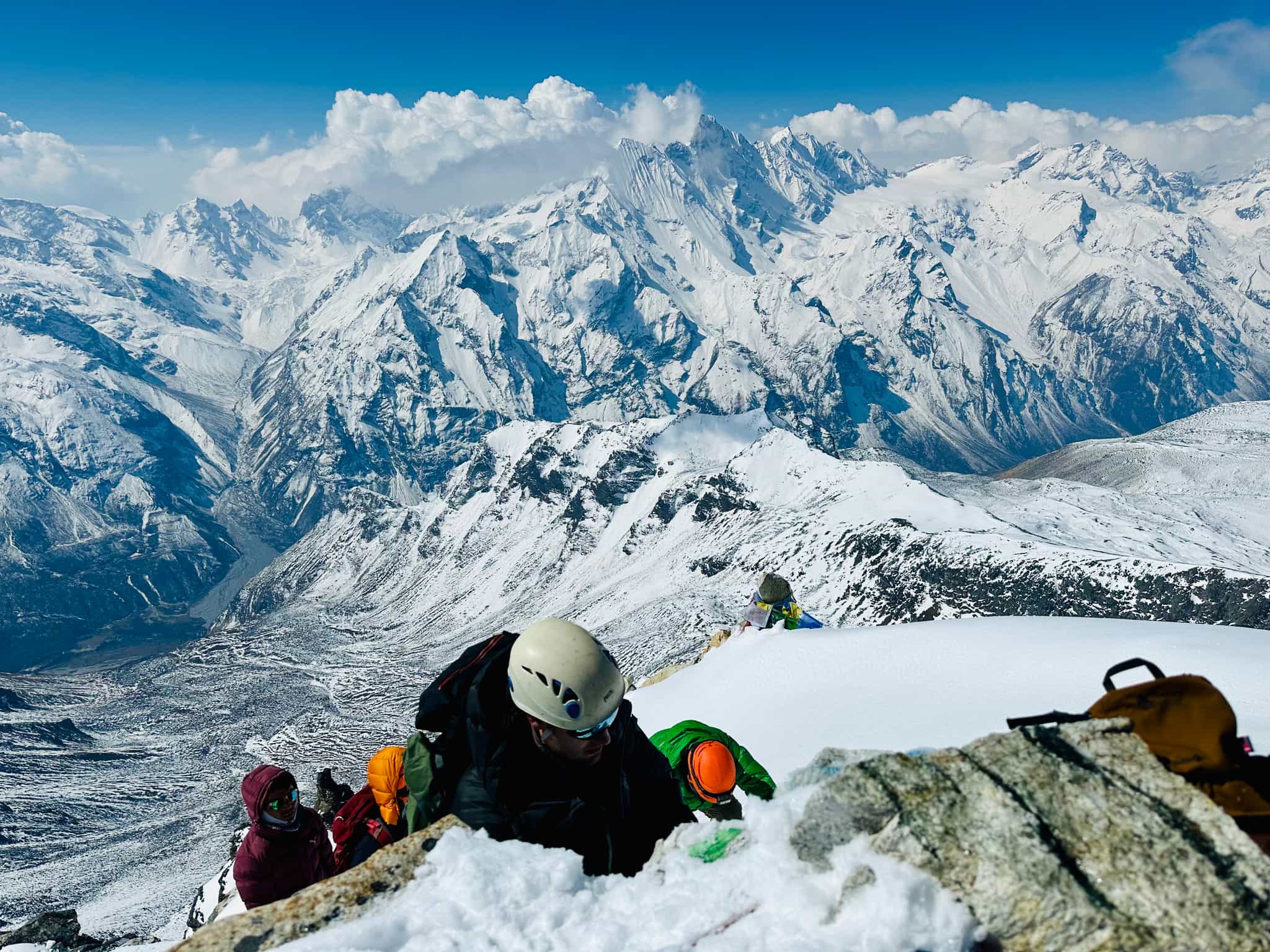
Hiking
Headtorches at the ready as you set off for the summit in the early hours, when conditions are usually at their best. The summit generally takes approximately eight hours, with the last 700m usually needing ropes, crampons and ice axes. You'll make your way along a small ridge to reach the top at 5500m – Yala Peak bagged! Your reward is panoramic views of Shishapangma, Dorje Lakpa, Gangchempo, Naya Kang, Tserko Ri, Langtang Lirung and many other astonishing mountains. After summiting, you'll head back to base camp for a quick refuel before descending back down to Kyanjin Gompa.
Day 9
The long descent to the Lama Teahouse
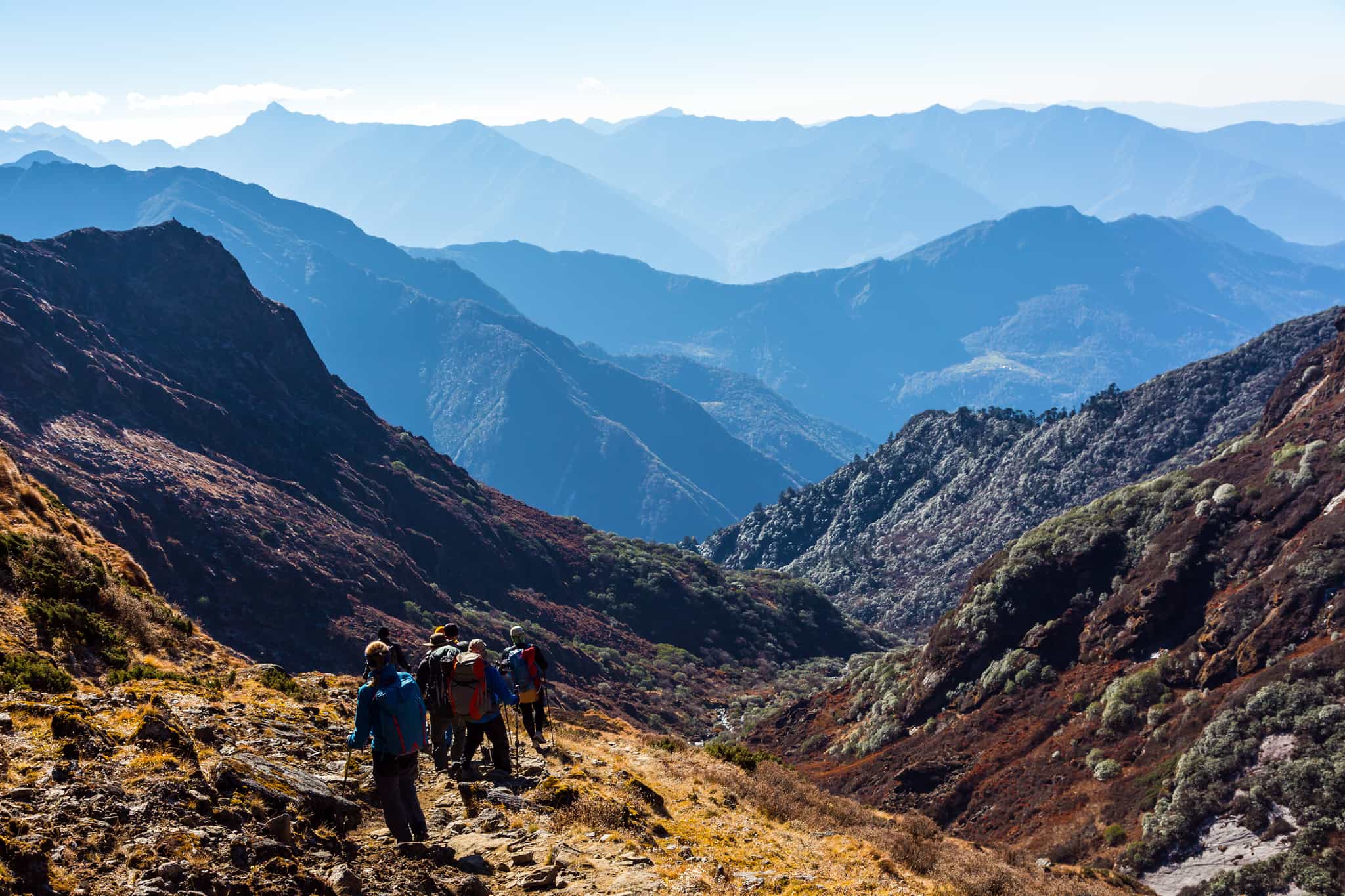
Hiking
With lung fulls of oxygen, you'll hop, skip and jump back down the valley all the way to the Lama Teahouse in Rimche. Now at a sensible altitude to do so, you can grab a local beer and celebrate your achievement!
Day 10
Back to Syabrubesi
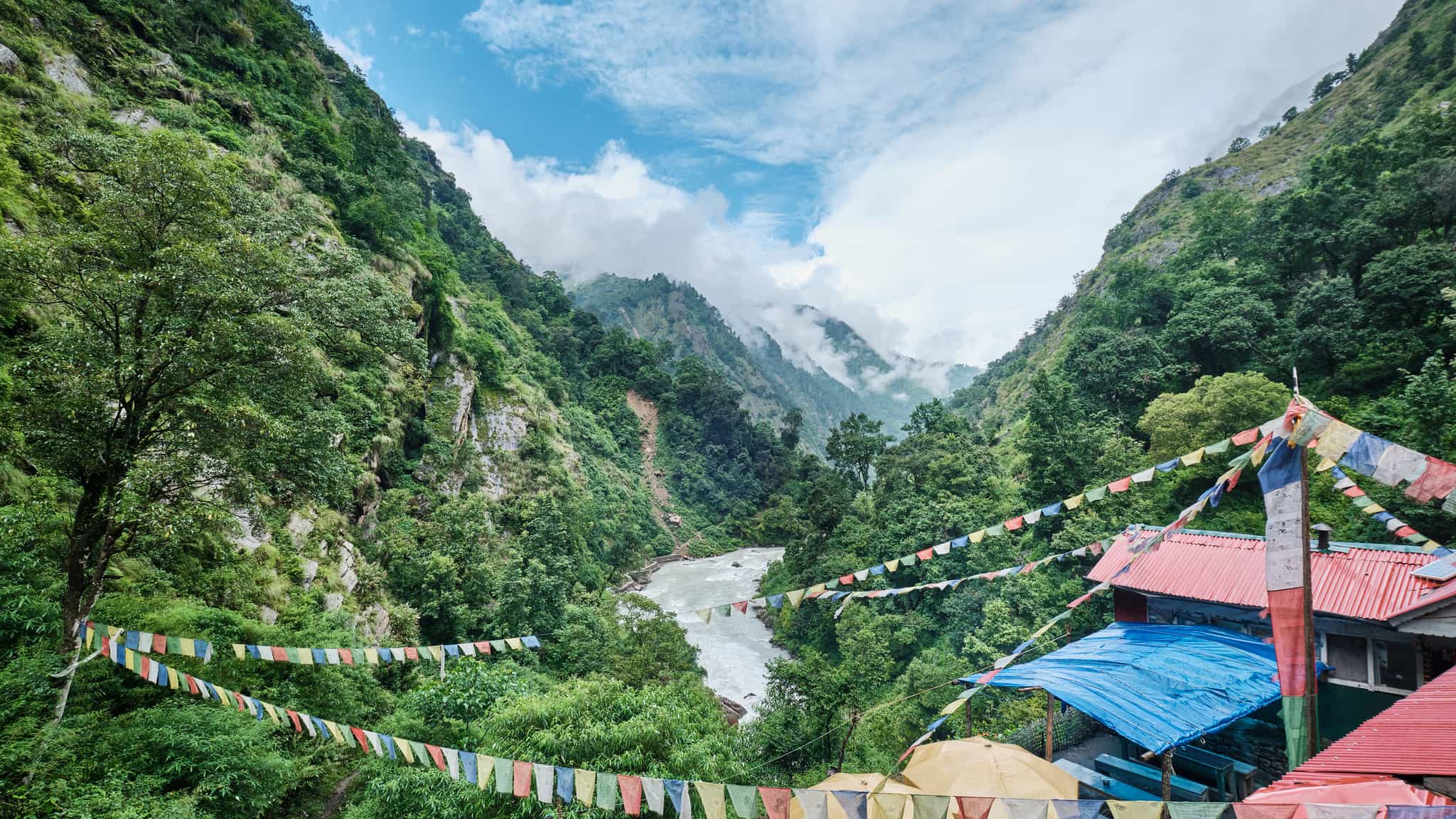
Hiking
It's the last day on the trail today, with an easy walk through the forest, retracing the track past Bamboo and Dovan and onto the overnight spot at Syabrubesi. This small town perched above a river is the perfect place to end your trek and to reflect on your achievement, before saying goodbye to the mighty Himalaya tomorrow.
Day 11
Road trip back to Kathmandu
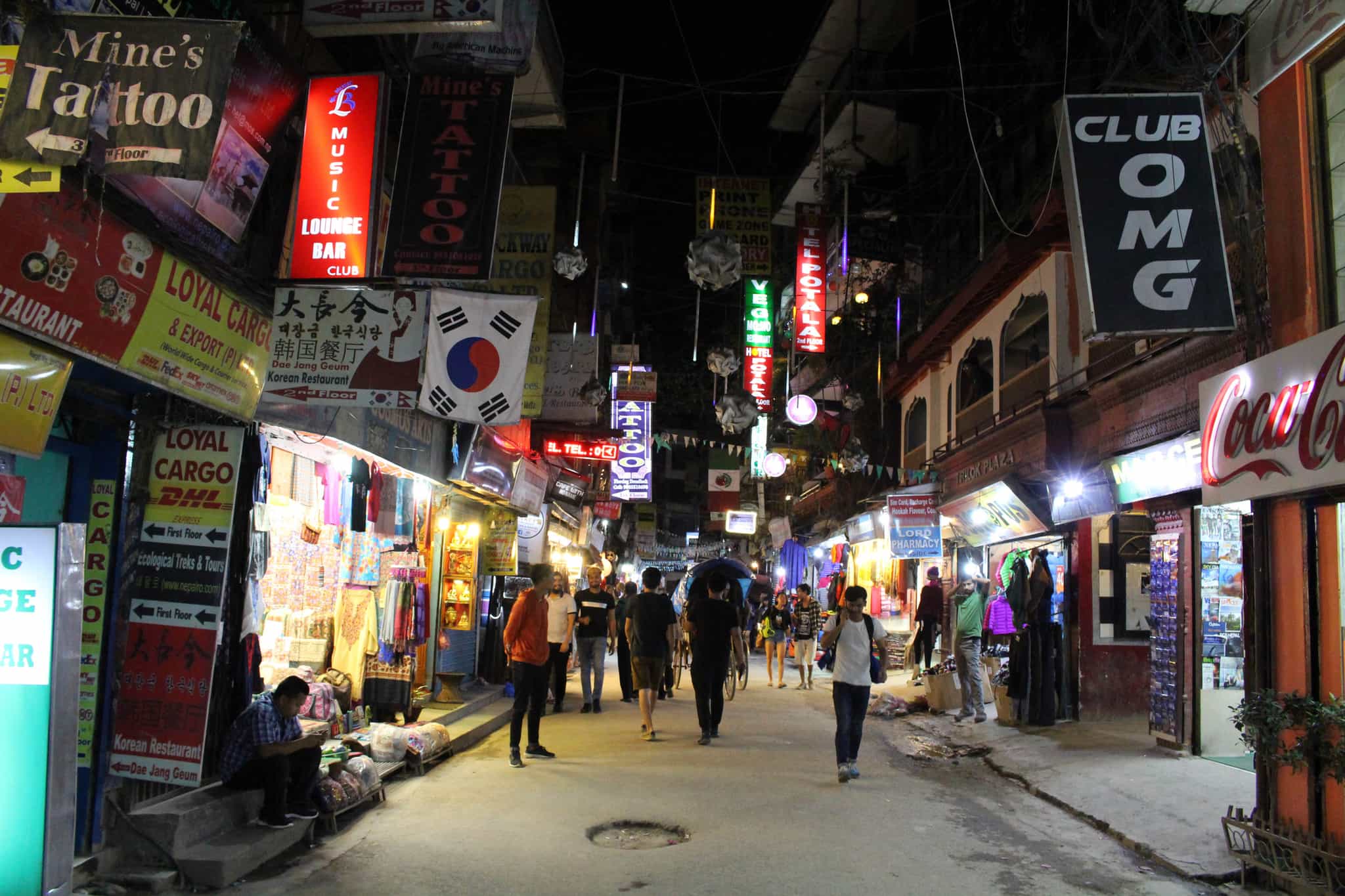
Driving
Jump on the bus back to Kathmandu, where a hot shower and your clean clothes await. You'll be staying right in the centre of Thamel, an area popular with travellers and packed with street food and backstreet bars. Head out for a final group meal and perhaps onto a local cocktail bar for a final celebratory nightcap.
Day 12
Last day in Kathmandu
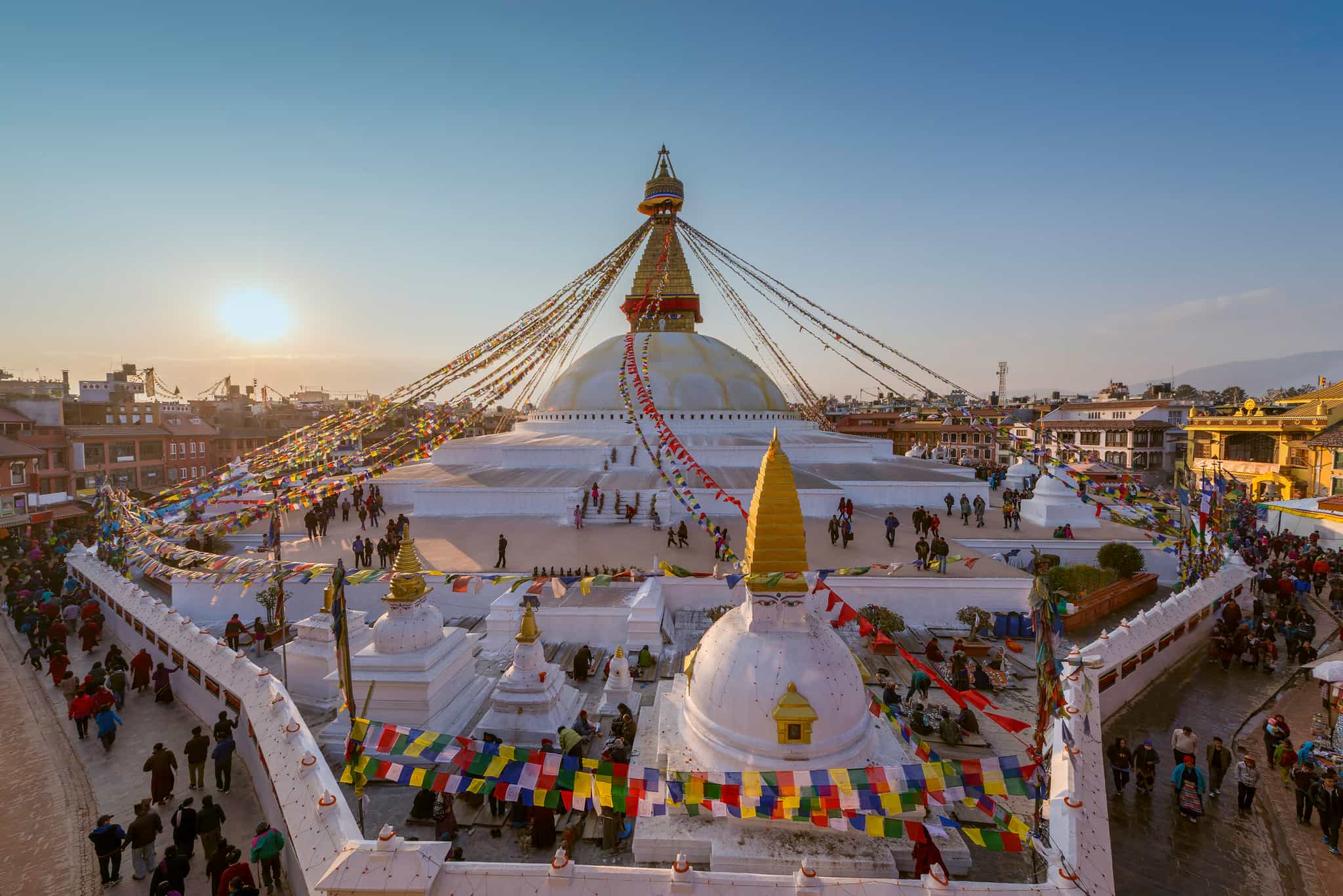
Enjoy a well-earned lie in and breakfast at your hotel, then spend your last day exploring the city before heading back to the airport, and reality.
The Area
Logistics
Starts
Kathmandu Airport (KTM)
Arrive by 16:00 on Day 1
Ends
Kathmandu Airport (KTM)
Any time on Day 12 (2026 onwards: anytime on Day 13)
Transfers
Airport arrival and departure transfers are included no matter when you arrive and depart (even if booking extra nights before or after the trip), provided you have completed your passenger information form and have supplied your flight details in advance. On Day 1, your tour leader will arrange a group briefing before a welcome dinner, so we strongly encourage you to book a flight landing by 16:00 in order to be able to join this on time.
2026 Duration Change: When booking travel arrangements, please be aware that this trip will be one day longer (12 nights/13 days) from 2026 onwards. The 2026 and 2027 departure dates listed already reflect the longer duration; please see FAQs for details.
Travel options
There are regular flights to Kathmandu from major airports in the UK, Europe and North America.
Day 1
Breakfast
Lunch
Dinner
Day 2
Breakfast
Lunch
Dinner
Day 3 – Day 6
Breakfast
Lunch
Dinner
Day 7
Breakfast
Lunch
Dinner
Day 8
Breakfast
Lunch
Dinner
Day 9 – Day 10
Breakfast
Lunch
Dinner
Day 11
Breakfast
Lunch
Dinner
Day 12
Breakfast
Lunch
Dinner
What is the food like?
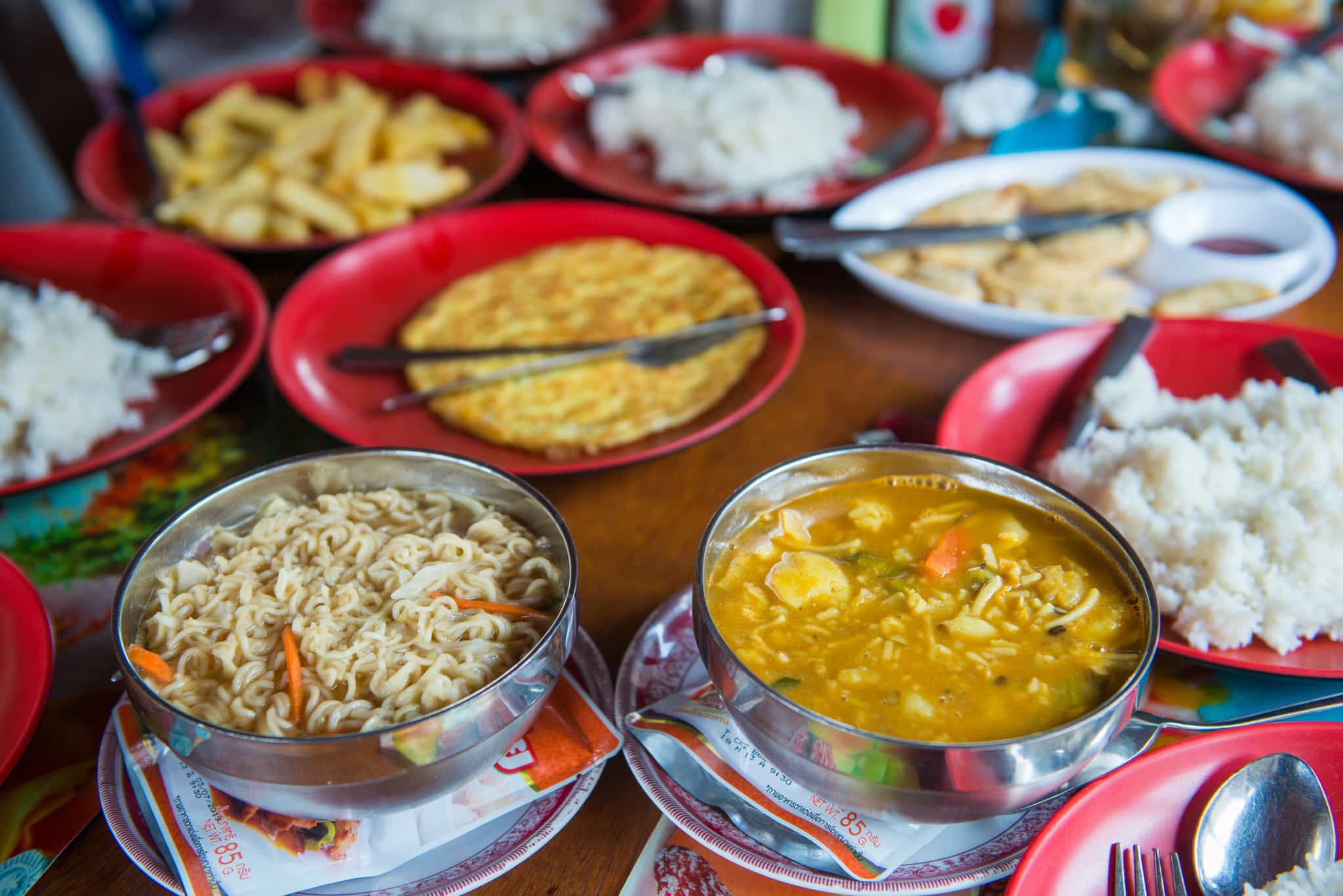
Breakfast is usually either hot porridge, muesli or Tibetan bread served with an omelette or boiled eggs. The menus in each of the teahouses are very similar, and there will usually be a choice of traditional Nepalese dhal bhat (a mixed plate of lentils, rice, vegetables and pickles – delicious and healthy), momos (Nepalese dumplings), mixed noodles, pasta or even pizza. Although meat is available at some teahouses, we suggest you ask your guide for advice about eating it – it tends to depend on how far it has travelled, as to whether or not it is a safe option.
Dairy-free, vegan or vegetarian diets can be catered for while trekking although meals may get a bit repetitive – dhal bhat will likely be your go-to staple. Gluten-free/coeliac diets are tricky to cater for on teahouse treks: beware that powdered soups and seasonings used often contain gluten, and cooking oil is commonly reused and may cause cross-contamination. Please explain your dietary requirements to your guide so that they can assist when ordering, and bringing along some extra food/snacks is advisable.
What is the accommodation like?
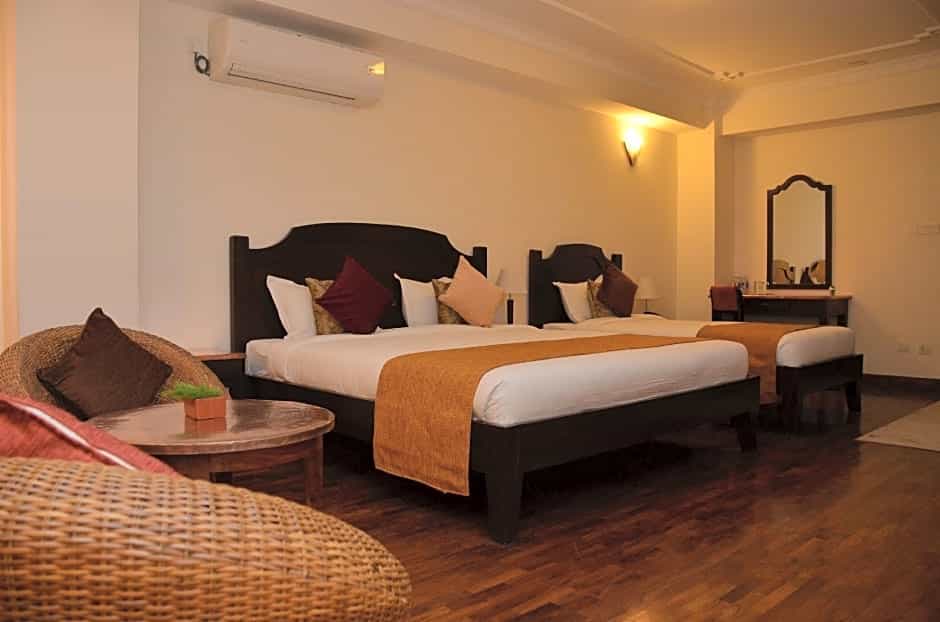
Kathmandu
You’ll stay in a centrally located tourist hotel in the heart of Thamel (such as the Hotel Holy Himalaya, or one of a similar standard), close to the main shopping area and heritage sites. You will stay in twin-share rooms.
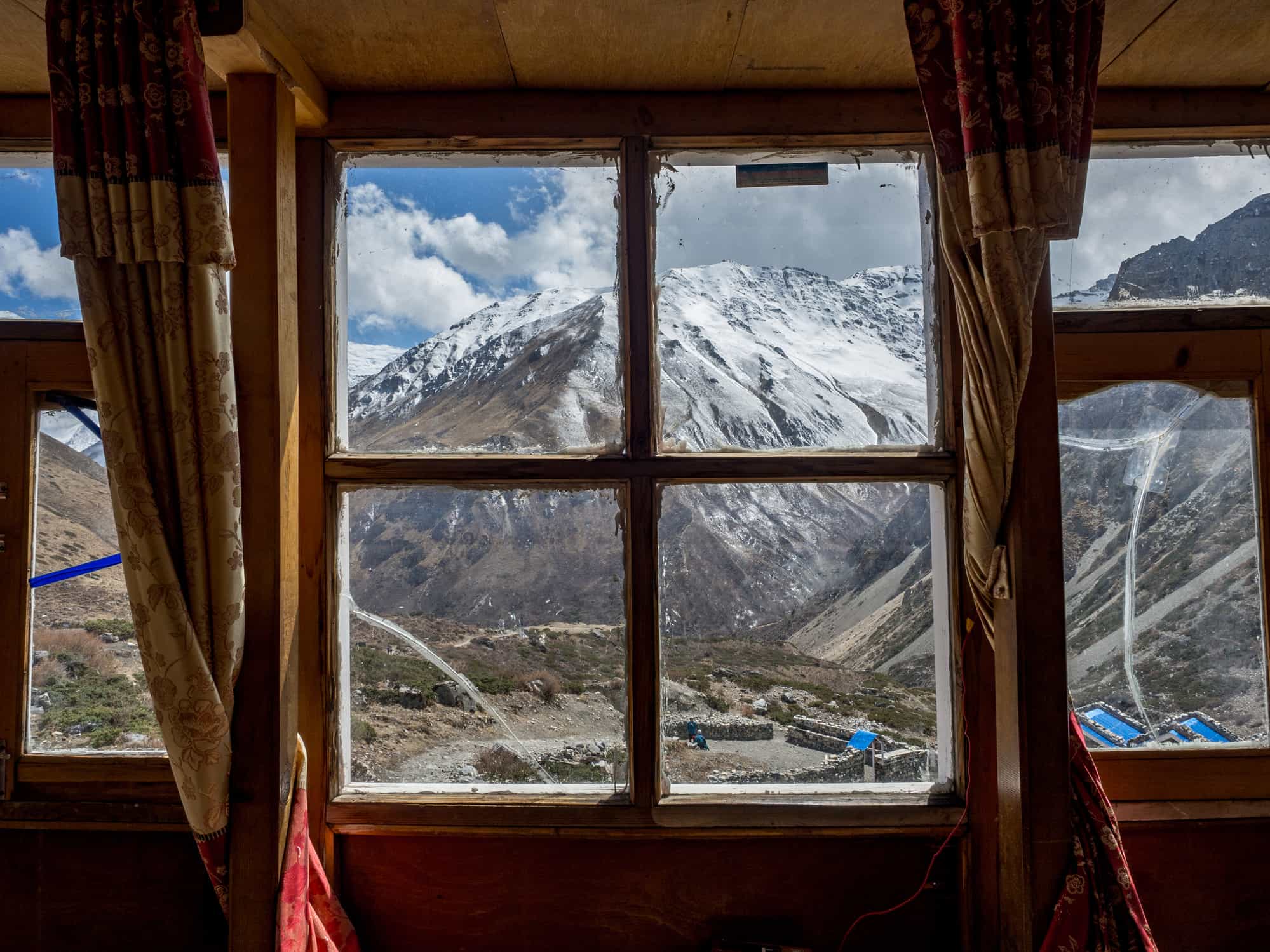
Trekking the Langtang Valley
Generally, most adventures to Nepal are based in remote areas where the accommodation will be basic. On the trek you will stay in teahouses most nights – these are mountain lodges that tend to have a communal dining area and basic toilets. The rooms are usually twin-share sorted by gender; however, if there is an odd number in the group they may occasionally be mixed. There’s no heating so you'll need your warm sleeping bag. WiFi and hot showers are often available at a small cost. You can usually charge your phone up – again, you guessed it, for a cost – so remember to take an adapter.
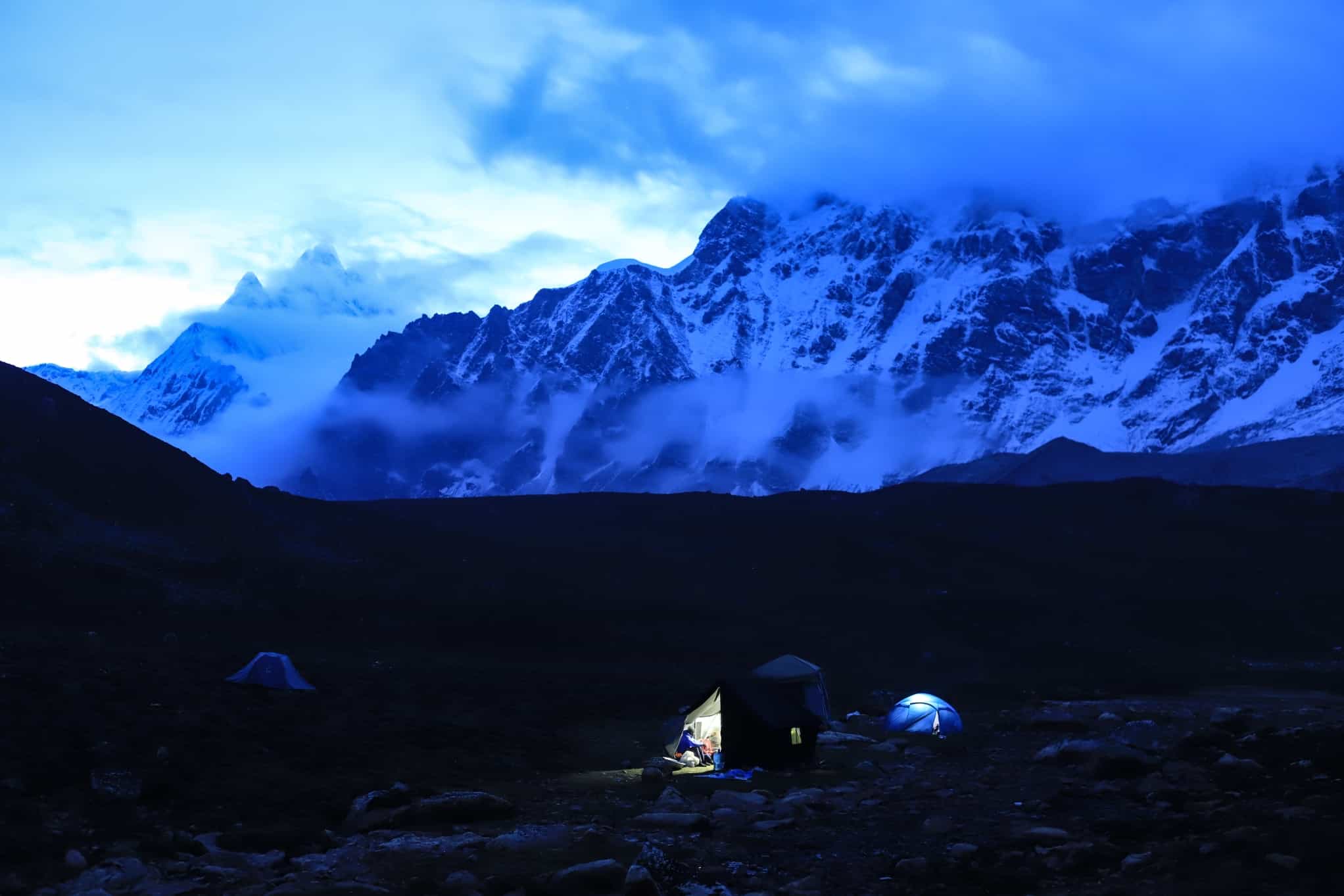
Yala Peak
You'll also spend one night in a twin-share dome tent at Yala Peak Base Camp. All your camping kit is provided, but you might wish to pack a small inflatable pillow.
Upgrades
For solo travellers looking for their own space a private room can be booked, please see Optional Extras for pricing. Please note, this is only possible for the two nights in Kathmandu and is subject to availability. Please request this at the time of booking.
This trip has been rated as Tough
Much of the trek is within the capabilities of people with good fitness and stamina who are keen and experienced trekkers. Still, it is important to note that trekking at altitudes above 3000m (10,000ft) is more demanding on the body than walking at low elevations. Some training beforehand will help and we advise doing at least one weekend of back-to-back days walking. The guide will set the pace and as with all treks at altitude, the approach is ‘slowly, slowly’ to help you adjust.
The ascent of Yala Peak is non-technical so you do not need previous mountaineering or high-altitude climbing experience. You will, however, summit using ropes, crampons and an ice axe – you will learn the basics and practice using these while hiking on the previous days, and there will be plenty of time to go through these skills with your guide before you start the summit attempt. It may be that you use these items for a short period only or for a couple of days as you approach the summit, the weather is highly changeable so you will prepare early on in the trek to ensure you feel confident with the ascent. Overall, the climbing day will still feel challenging due to the rapid altitude gain and the terrain during the summit push, so good stamina and preparation is crucial.
What will I need to carry?
There will be one porter for every person. They will each carry up to 20-25kg of kit (including your climbing gear), so your overnight bags will be transported for you. Please pack no more than 15kg per person of personal clothing/items (including your sleeping bag) in a soft backpack or duffel bag, allowing for the climbing equipment to make up the remainder of the porter's weight limit. You will only need to carry a daypack with essentials in it (extra layers, snacks, water, suncream, camera etc).
There are two key seasons for trekking Yala Peak in Nepal:
Pre-monsoon/spring (March-May): Temperatures rise significantly in spring and flowers are in full bloom in the lower lands. Although it can still drop below freezing at night, the daytime temperatures tend to sit between 10-15°C.
Post-monsoon/autumn (Sept-Nov): This is the most popular time to trek in Nepal with sunny and mild days generally. It can get cold and windy at higher altitudes, however skies are usually clear.
Snow is likely in early March and late November but for other dates later in spring and earlier in autumn, it will be less prevalent. If there is minimal or no snow, the summit will be approached as more of a scramble than a snowy hike, so crampons and ice axes won't be needed. Of course, mountain weather is notoriously hard to predict and snow can be expected on any trip, so all the kit will travel with you in case it is needed.
This was an amazing trip
This was an amazing trip and made so many memories my partner and I will treasure. The hiking section was tougher than the itinerary suggests but the langtang valley had some of the most beautiful scenery I've ever seen and we really enjoyed the wildlife. The main draw back for me was the ascent above 3,800m - we had never hiked at altitude before and really struggled with feeling unwell. . . . although, those in the group who had experience of being at altitude before seemed to manage OK. Still really happy we did it but maybe suggest others do something else before this if this is also your first go at mountaineering at altitude.

DO IT!!!
Where to begin. . I booked the Annapurna Circuit Trek with Freedom Adventures and it is hands down one of the best trips of my life.
Not only is the Trek itself truly jaw dropping, but the guides - our Trek leader Tika, as well as Pravin, Santos and Anil, and the amazing porters really made the journey special. Their humour, camaraderie and care for everyone single person on the trek made everyone feel safe and looked after. They were utter professionals, all of whom I will miss.
I work as a guide in luxury travel and I can honestly say that I have learnt a lot about excellent service from these guys - good vibes every day.
Freedom adventures are also fantastic when it comes to arranging the finer details - transfers, permits, accommodation etc. You basically just show up, hike, and enjoy.
Ultimately, this review can only do justice to the trip to the same degree that my crappy iPhone photos did justice to the beauty of the mountains. If you’re reading this, all I can say is DO IT! You won’t regret it!
Momo-mentous
The Himalayas have long been on our bucket list and this trip didn't disappoint. Freedom Adventures were a safe pair of hands and the team of guides and ironmen around us were excellent company, in addition to our group who were lovely without exception.
Physically, it was a trip of two halves: the days ascending up Langtang Valley were beautiful and an easy walk if you're a regular hiker; the summit night was a different beast. We, and all of our very fit group, found it a huge mental and physical challenge, though this did make reaching the top feel even more momentous. Personally, I found it harder than marathons I've run, and hadn't anticipated the impact of altitude sickness. Sadly, it meant not everyone made the summit (which we gathered is normal for all groups). We were well prepared for the technical elements by Freedom Adventures and the climbing/abseiling/glacier walks made the summit day a complete adventure we could never have attempted ourselves.
The accommodation was much nicer than we were expecting, the food was copious and delicious with sherpa stew, snickers momo and chatpatay leaving lasting impressions, not to mention the ever-present dhal bat.
It's difficult to articulate the elemental awe of this trip. If you're an adventurous person, it's worth experiencing for yourself.



Incredible but challenging
Climbing Yala Peak was an incredible and challenging adventure! This was my first hiking trip in Nepal, and it was wonderfully organised by MBA in collaboration with the Freedom Adventure team. I want to thank the amazing team: Sanjeet, Nima, Lopsang and the fantastic group of porters who helped make this an unforgettable trip! I was also lucky to have a great group! The first few days of hiking through Langtang were beautiful, and while reaching the summit of Yala Peak was physically demanding, it felt like a significant achievement. Ensure that you are in good physical shape for this trip and approach it with a positive mindset.
Trek to the summit
Not a trek to be underestimated. You'll need nerves of steel, plenty of snacks and a great sense of adventure to tackle Yala Peak. Thankfully my experience of having a fantastic group and a meticulously planned tour, with comfortable accommodation, plenty of decent food & many snacks and a steely team of guides and ironmen, helped me achieve the summit. Thanks to Sunil and all the team at Freedom Adventures.


Fantastic Yala Peak trip
This was my first trip to the Himalayas and it massively exceeded my expectations - the guides were fantastic, hardworking, and really made the trip - Sunil, Dawa, Bijay and Ujwal were all fantastic, as were the ironmen carrying our luggage.
The technical climbing techniques were well taught so everyone felt confident for summit night. The tea houses were basic and cold but perfectly adequate, very welcoming and with decent food. The scenery was jaw dropping, starting in dense jungle and moving to arid climes, with countless waterfalls and snowy peaks surrounding you. Our group was full of like minded people and we got on so well, which made the whole trip great fun.
Summit night itself was incredibly challenging and unfortunately I was not able to complete it due to altitude sickness symptoms, turning back with around 250m elevation / 2. 5h to go. While disappointing it did not impact my overall enjoyment of the trip.
Highly recommend the trip - high fitness and grit is required for summit night!


Amazing first trip with MBA
Prior to this trip I was a big hiker, runner etc. wanted a bigger adventure than a standard holiday away. The views were stunning, organisation on point. The hikes were all doable for reasonably fit people. The final summit was different, being a bit more technical (ropes/crampons) and the altitude affected some people too much. It’s a roll of the dice with the altitude; whether you’re very fit or not but it was a healthy challenge





Tough
What a fantastic trip. I felt I was very lucky with my group and an great team of guides and iron men (porter's) Everyday was beautiful and with the exception of one tea house the far exceeded my expectations. For me the summit day was harder than I expected, pushing me to my absolute limit, but all the more rewarding as a result.

Yet another fantastic trip with Freedom adventures and MBA
This is my second trip with Freedom adventures in Nepal that I’ve booked through MBA and I’ve been blown away yet again by the work ethic and enthusiasm of the support team. The scenery is stunning but what really makes the trip are the guides and the team they put around you who will both give you the best possible chance of submitting but also make sure you have a great time doing it.
Wonderful trip with wonderful scenery and wonderful people!
Highly recommend this trip! The itinerary was perfectly structured and never felt rushed. The tea houses have basic (but clean!) facilities and very cosy common rooms - perfect for learning to play Dhumbal! We had an amazing team guiding us under Sanjeet’s leadership - Sanjeet is a gem; kind and knowledgeable. Kush is always up for a joke, and Dawa and Asman are fantastic guides (and dancers!). Overall I can’t recommend this trip enough!

Great Trip
A truly wonderful experience. Exceptionally well organised. Sanjeet and his team were amazing. It’s the friendly, welcoming and informative manner you get from him and the guys. They couldn’t have done any more to make it memorable. Thank You!! Until next time!!!




One of Life's Personal Challenges
What a fabulous trip, really well organised by MBA and some fabulous guides and porters. Sanjeet, Anil and Tea were all experienced, knowledgeable and funny. A real pleasure to be with for the duration, as was the crowd we all met there.
The only real negative would be the quality of some (not all) of the teahouses - stopping a full 5 star rating.
We all expected them to be basic, of course we did, as part of the experience. But these were definitely the lower end of those we passed by - including rain pouring into one room! But also when compared to those that Intrepid used (for the same money) - we know as we had a mirror group that we compared notes with...
As they are only c.£4 per night, I am sure for a small increase, the nicer ones would have been appreciated, including us nipping to one next door for a shower.....
Other than that, prepare for paying at each teahouse for hot showers, electricity and wifi, but it worked well.
Everything else, the route, the professionalism of the team, knowledge and safety were all fabulous. And I have to admit, I think out team were far more fun than the others we saw......!!
Enjoy!





Absolute trip of a lifetime!!
Spent an incredible 10 days with an awesome crew and group! The scenery was jaw droping-ly stunning, the hikes were challenging (but do-able with training) and our guides were great. The summit day was more tough that I had prepared for (mentally) but we made it! This was my first time 'at altitude' and I underestimated how it would affect me. Overall, 10/10 - an incredible trip.



Unforgettable trip
This was my first time to Nepal, and it blew my expectations away! The trek was varied and beautiful, the staff, including guides and porters, were all wonderful. The trip ran smoothly, and summit day was difficult, but very rewarding.
If you're thinking about this trip, just do it! It's not easy, but it's worth it.



An incredible trek!
8 days of trekking with a superb group of 10 plus a superb group of 10 guides and porters. The altitude was tough but with excellent support and a nice slow pace, it was doable for anyone with good walking fitness. Scenery was spectacular and the accommodation and local Nepalese people couldn't have been better. Thoroughly recommend this trip. Incredible!





A challenging but incredibly rewarding trip !
This is a very challenging trip; we gained a lot of height very fast and after 4 days we were at elevations of over 4,700m. I found acclimatizing at these speeds difficult.
But it was completely worth it - the trek is incredible. We went from from lush green jungles to the most breathtaking mountain scenery surrounded by glaciers and ice sheets.
Prior to the trip as I was prepping and queries arose, the teams were responsive and very helpful. Logistically the trip was extremely well organized. Our mountain guides and support teams were amazing and very safety conscious; I had complete trust in them to get us up and down this challenging hike. They were always supportive and cheerful and great fun to be around.
I had an amazing time. Thank you team !




This is an epic adventure
This is an epic adventure and shows you such a range of Nepalese scenery. The porters and guides make the trek so special and it really felt like we were all one big team. Summit day is long, hard and technical in places.
Classic trek with a mildly
Classic trek with a mildly technical peak added on. Well-organized local hosts
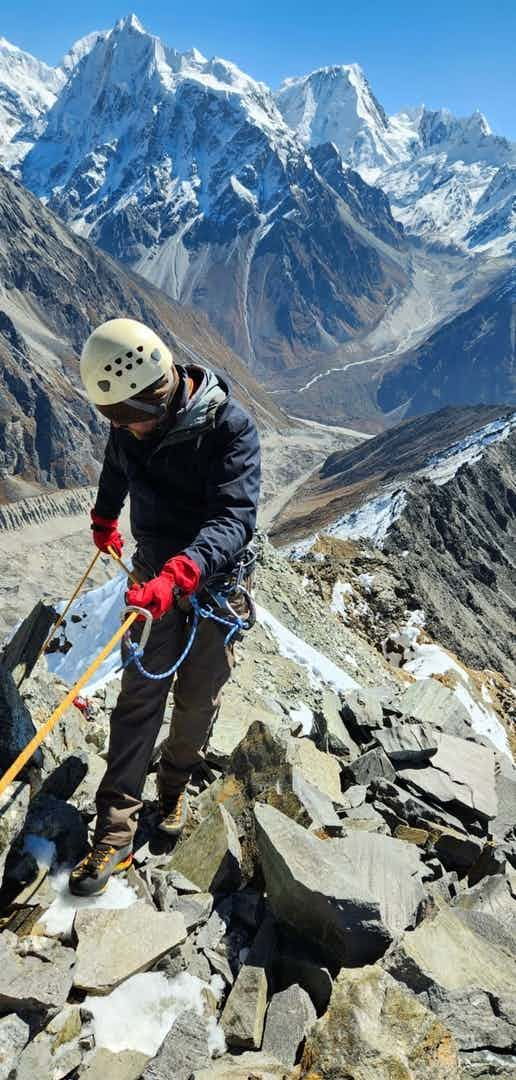
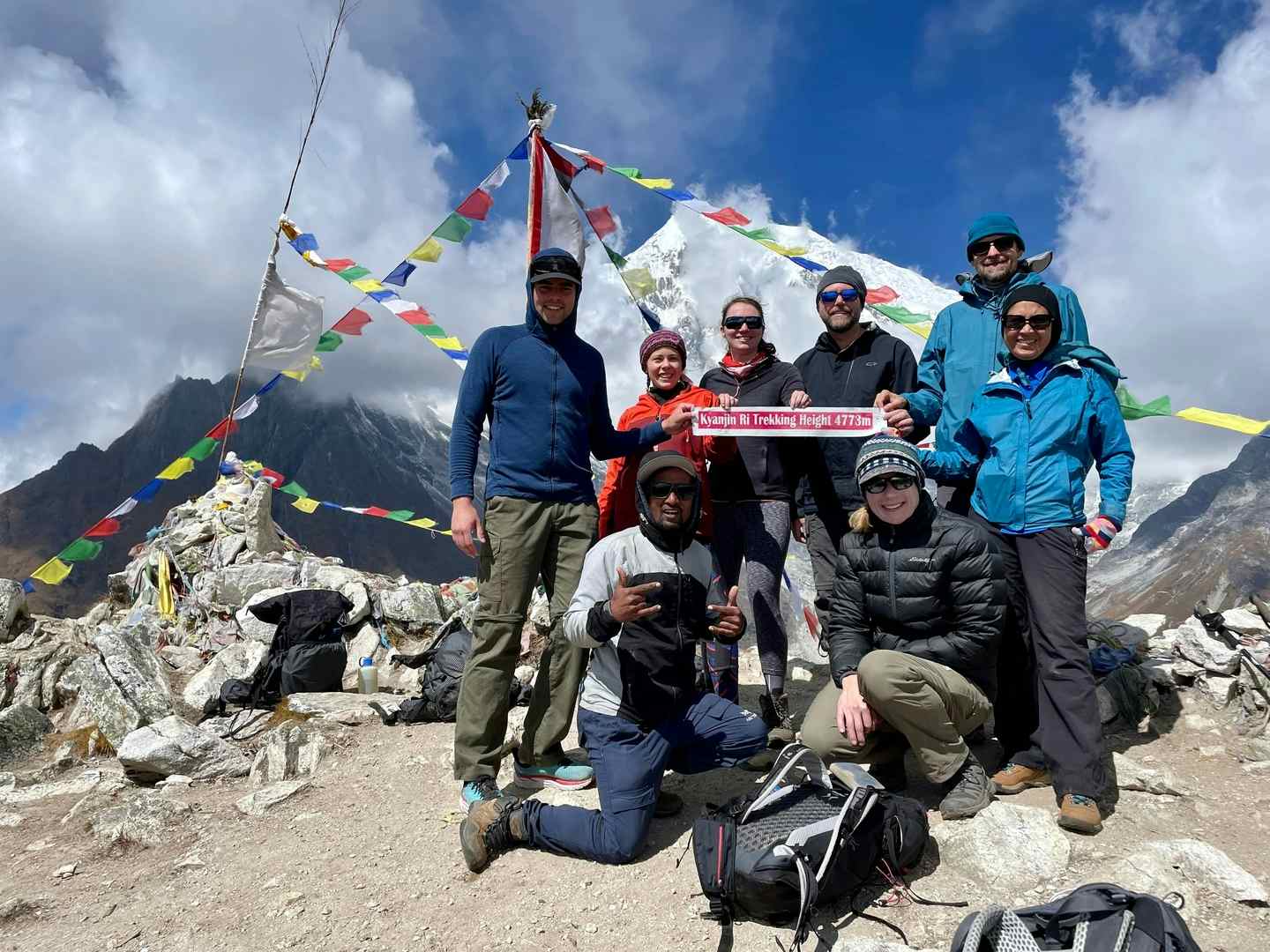
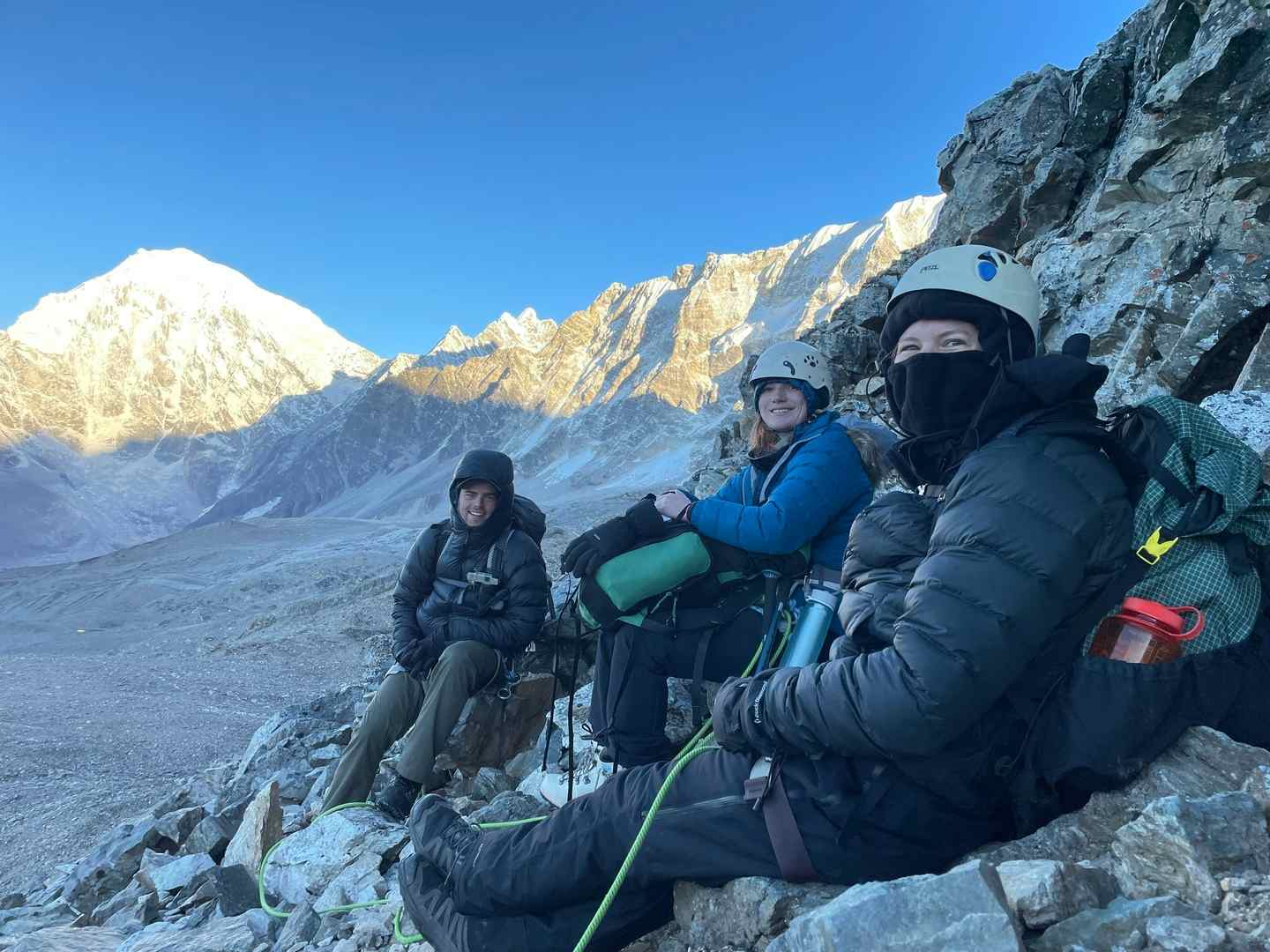
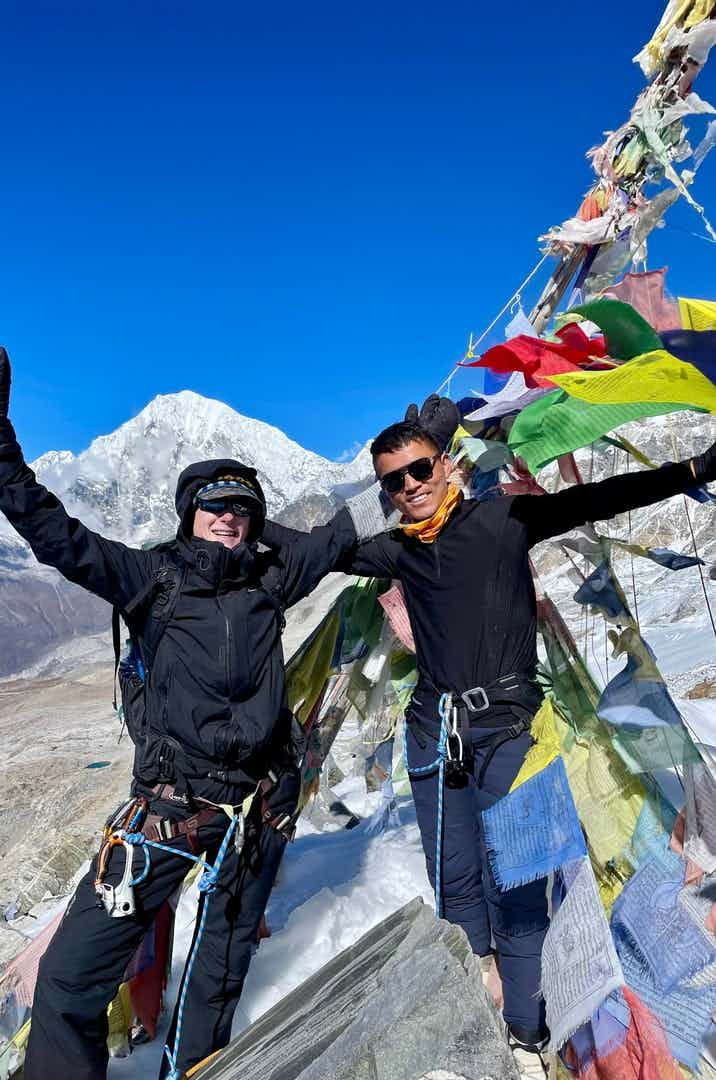
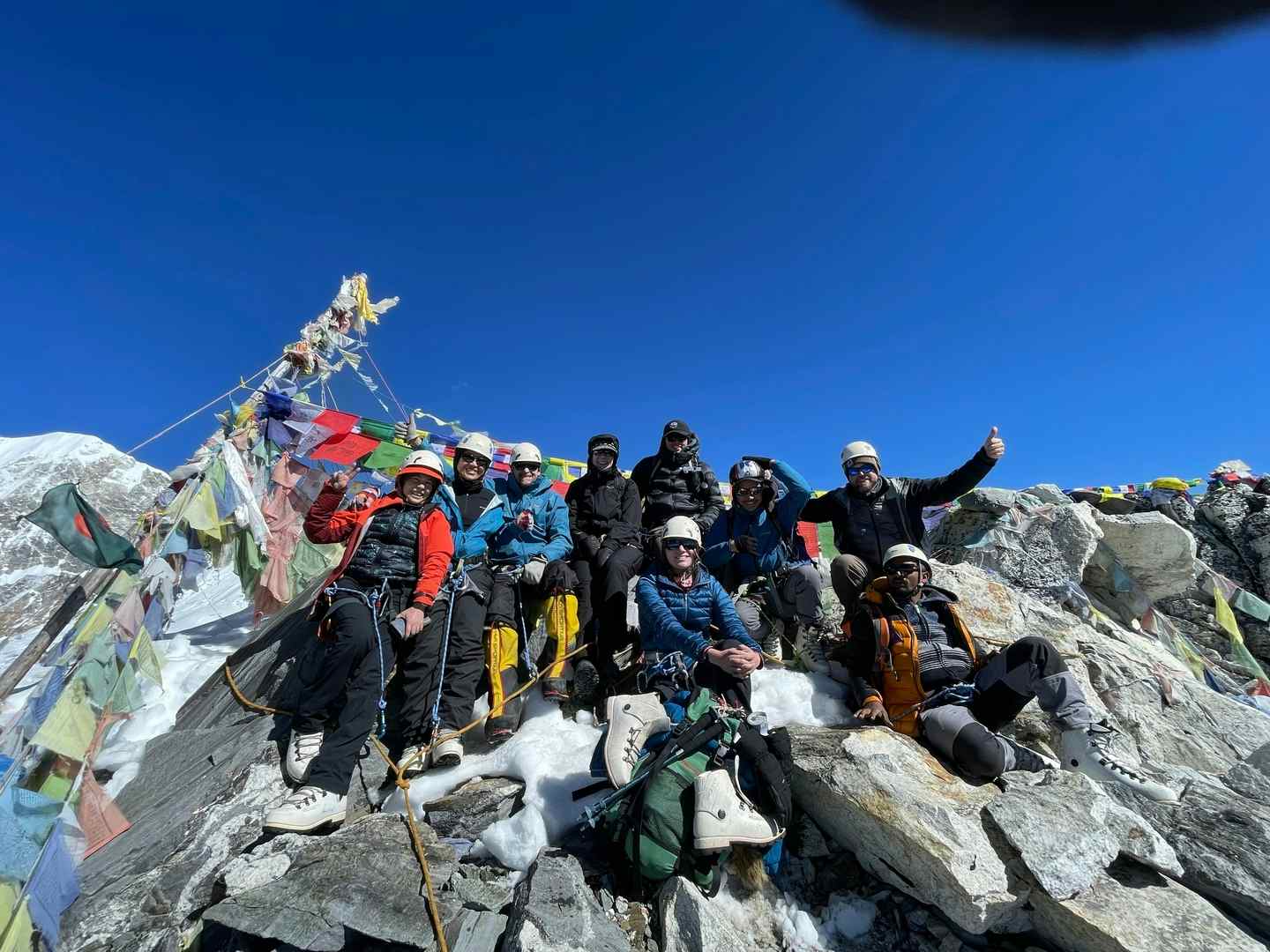
Where to begin? To start I will say that I would 100% recommend this trip for anyone looking for STUNNING natural beauty, a true cultural immersion, and a very tough physical challenge. I would 100% NOT recommend this trip for the faint of heart - you need to be prepared for very basic (and COLD) accommodations, and a very very tough physical challenge. I personally LOVED this trip - I have done may group trips (this is my 4th with MBA), and this was, hands down, my favorite to date. Our local guides Sunil, Ngima and Chhiring were absolute professionals, and they were there to encourage and support each of us every step of the way. I am not a climber, but with 3 practice days I felt confidant on summit day. They looked after our comfort and safety every step of the way, and made sure all our needs were met. I have never seen such incredible scenery, and the local teahouses where we stayed gave a true glimpse into the local culture. The food was very plentiful, and delicious. The accommodations were basic, and VERY cold. It was cozy in the dining areas, where we gathered around a wood stove in the center of the room for dinner, but the rooms had NO heat - be sure to pack warm clothes and a cold weather sleeping bag for the nights. If you are looking for a true adventure, a physical challenge, and a true cultural experience DO THIS TRIP!!! A+++
An amazing and physically challenging trek! For someone who has never done mountaineering before, this was a unique experience that pushed me to my limits. The trek up the valley was beautiful, with many gorgeous waterfalls, views of distant summits, local wildlife, and immersion into the local culture of living in the Langtang valley. The summit day was long (16.5h), hard, and rewarding with spectacular views in every direction.
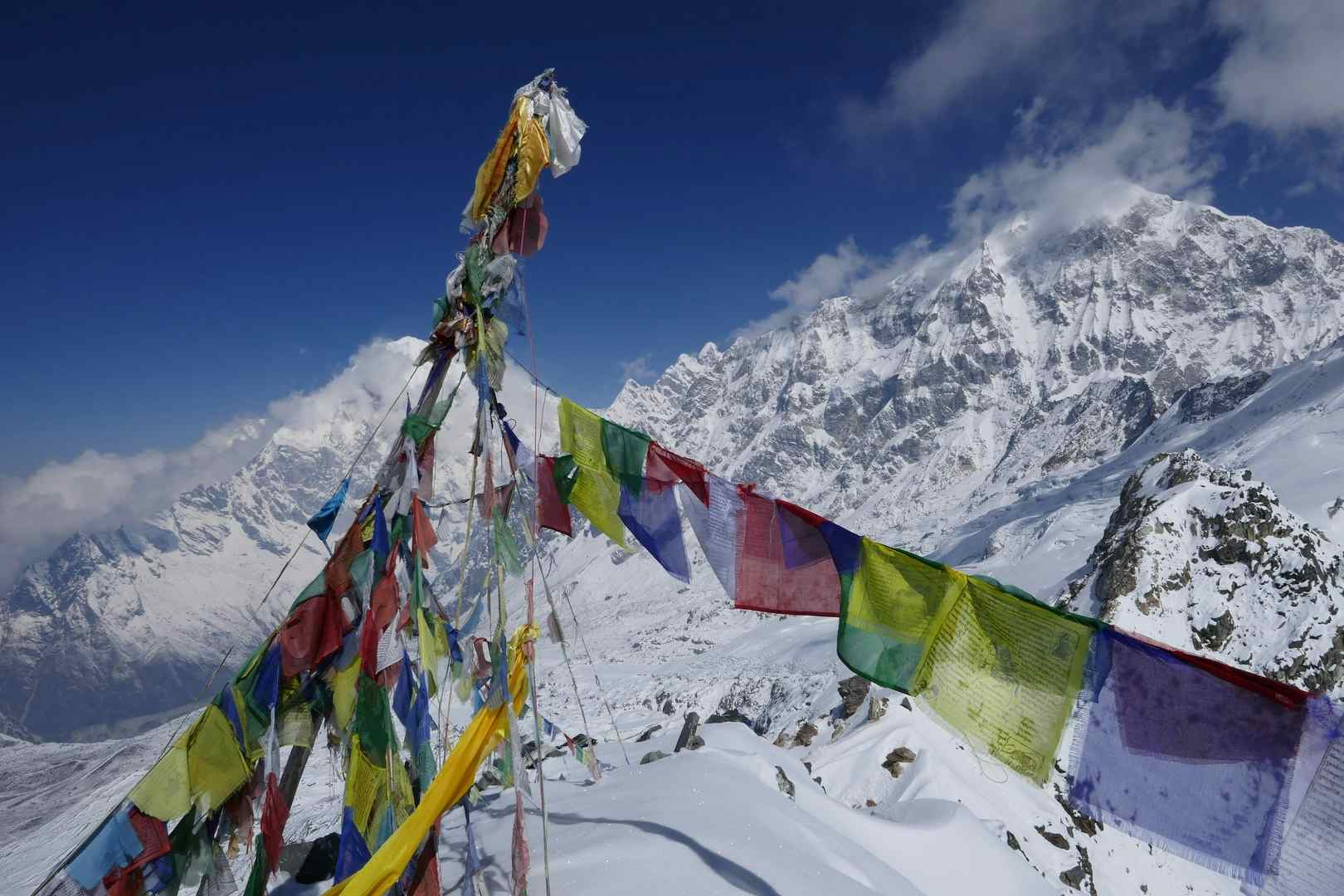
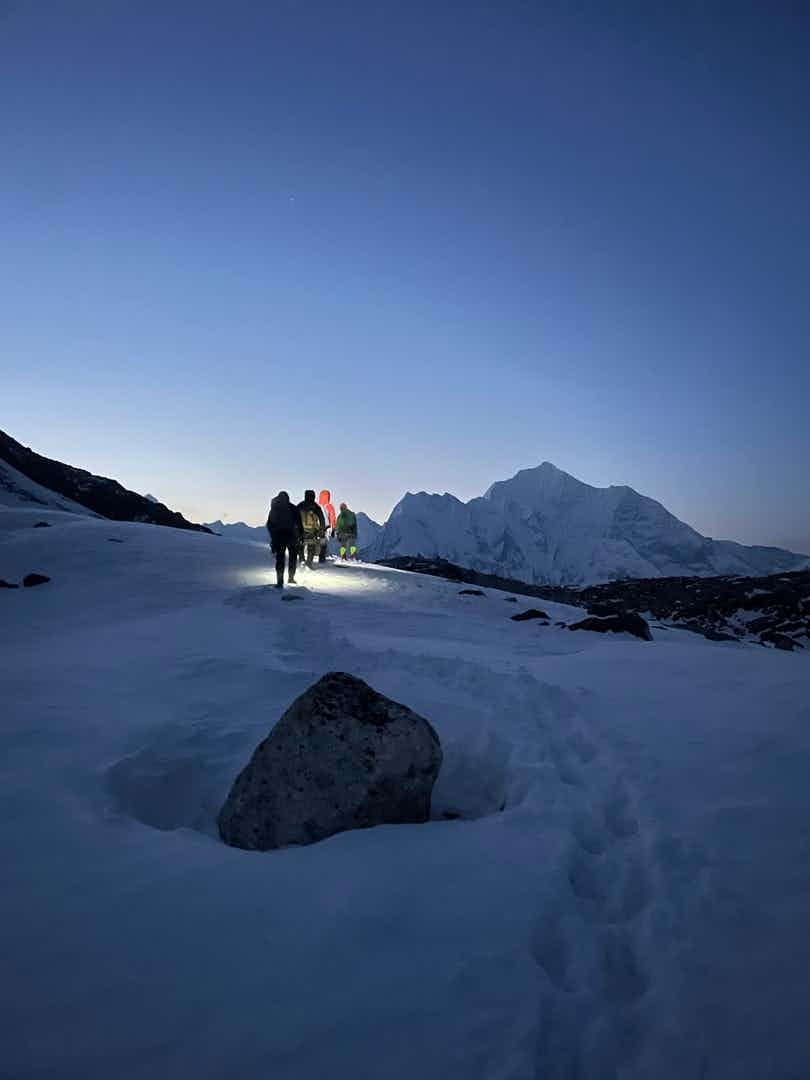
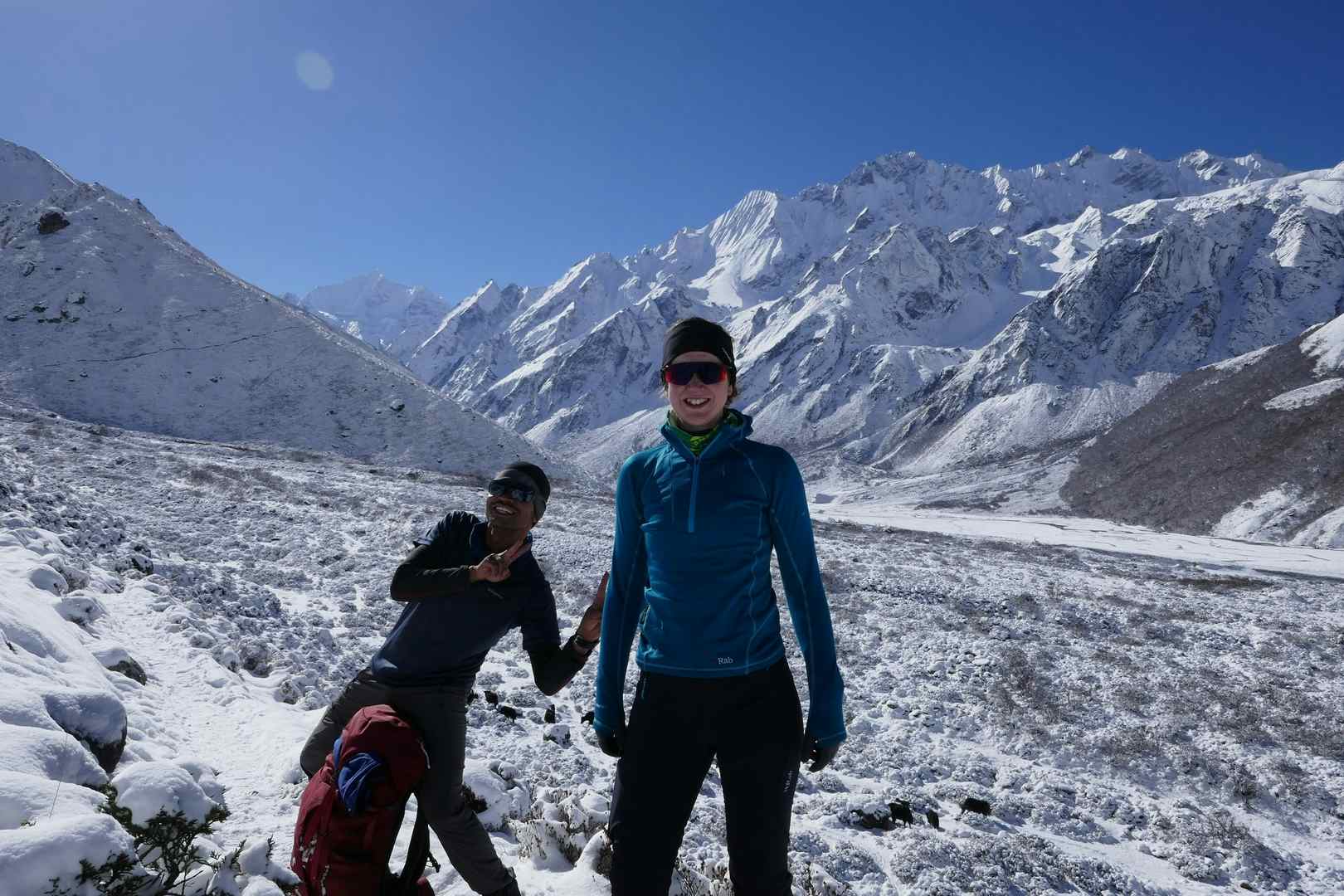
Trip of a lifetime! I cannot recommend this trip enough. If you want to experience a truly Nepalese mountain trek then pick this one. The trails are pretty quiet and take you from jungle to snowy miuntains over the course of a few daysa. The summit day of Yala Peak is a challenging and serious day out (especially in snow) but the reward of snowy mountain views for miles is worth it.. The local team were incredible making the trip for me. Experienced, knowledgeable and always on hand to ensure we had the best experience. The accommodation in Kathmandhu is comfortable great for exploring the crazy city and the tea houses on the trekking route gave a really special almost home stay experience. Big thanks to Dakman, Pasang and Ngima for a trip that I will never forget!
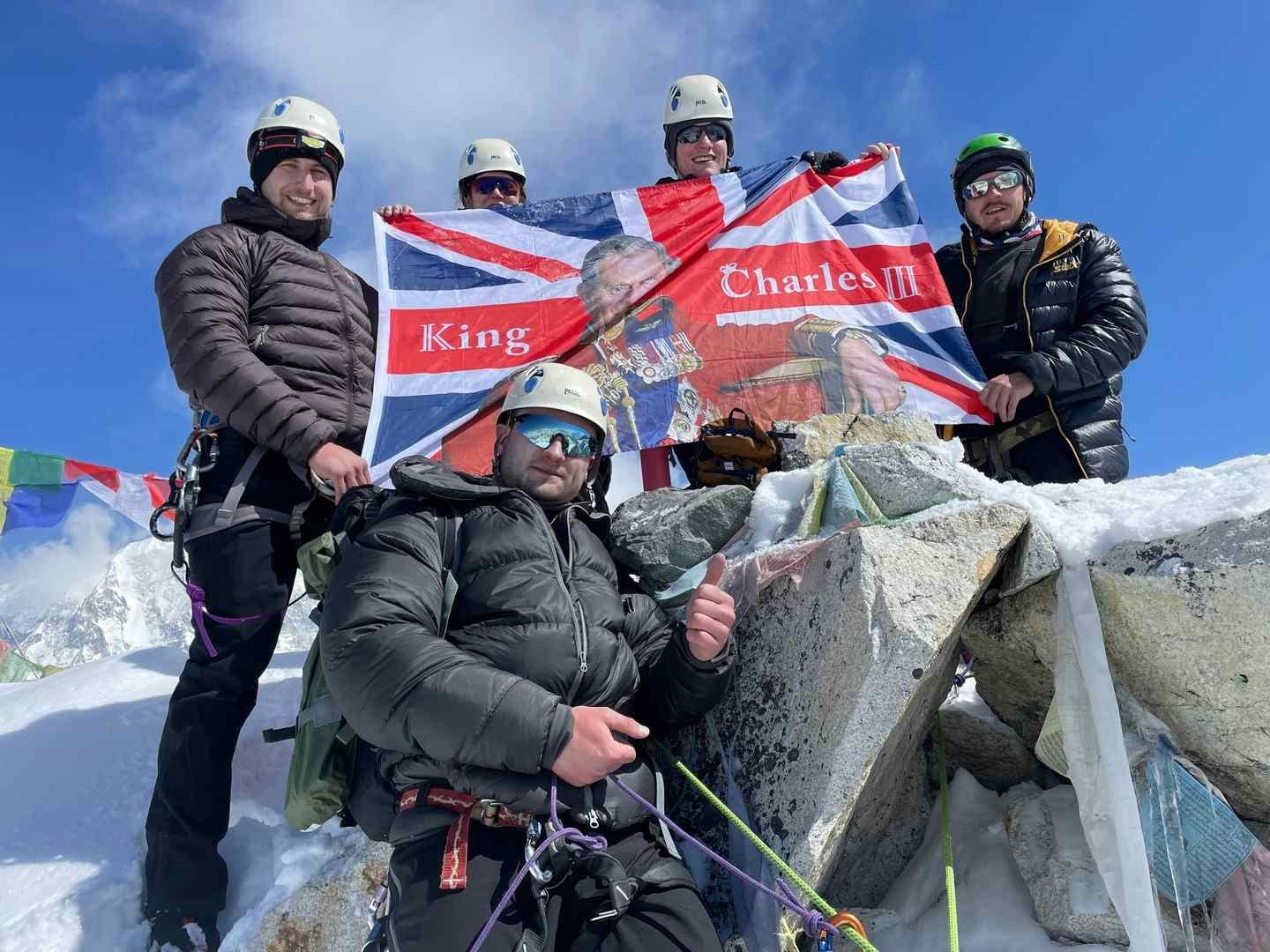
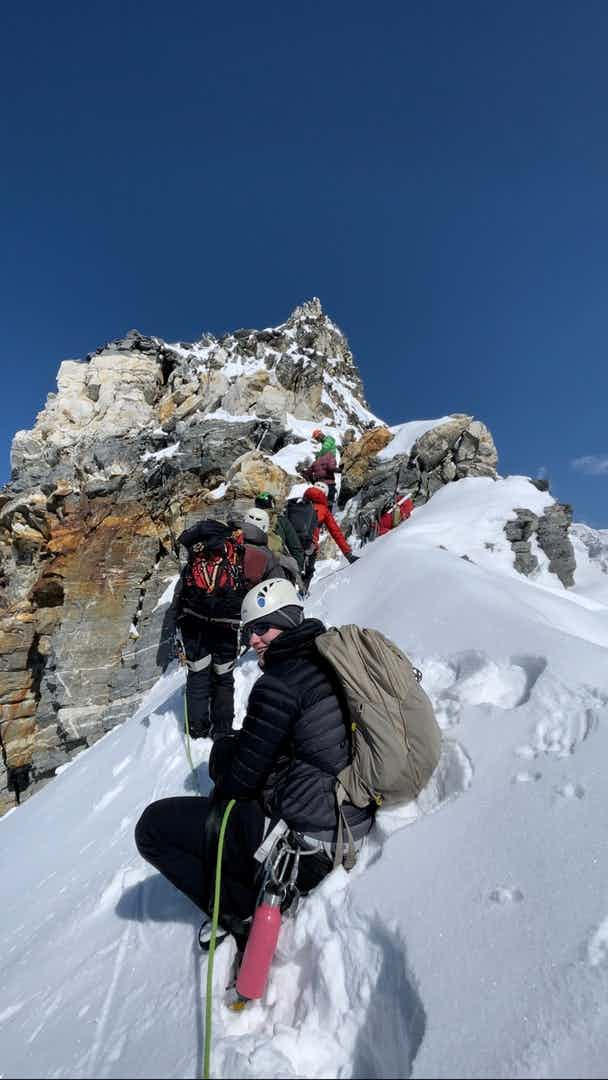
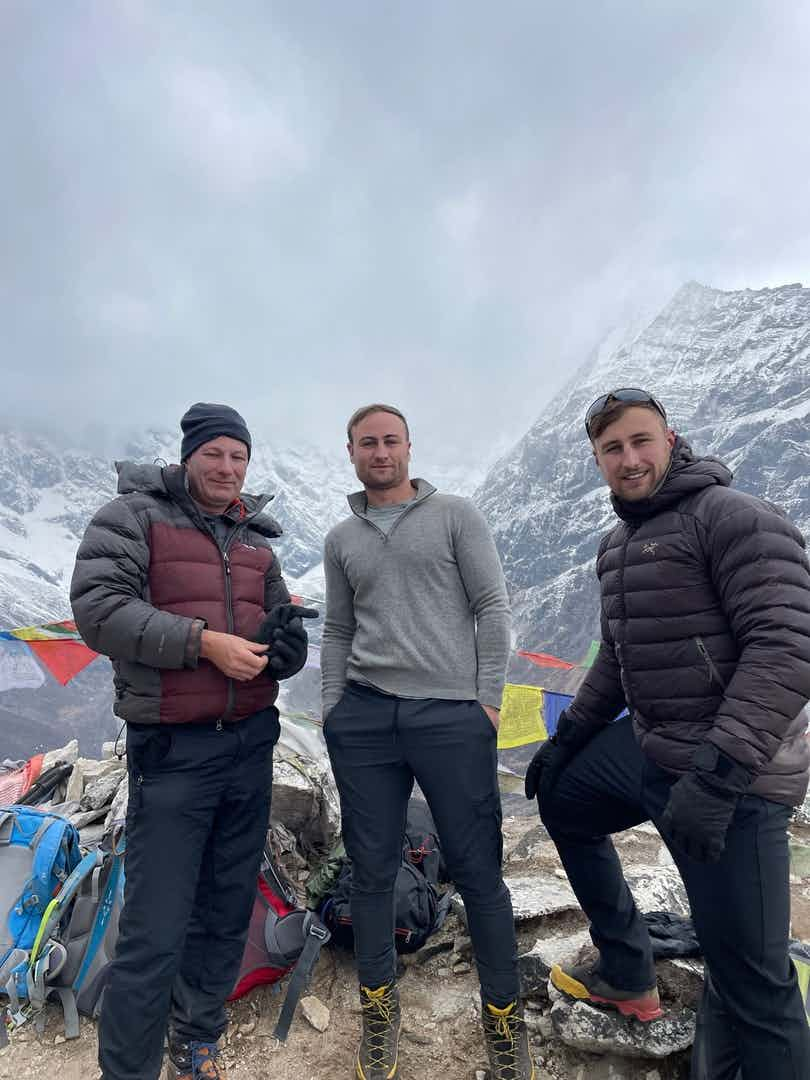
The trek was a fantastic experience that I’ll remember for the rest of my life. Dakman and the climbers Ngima and Pasang were very patient and accommodating throughout the trip and helped us all successfully reach Yala summit with not much prior mountaineering experience. They were all very polite and fun to be around as well as the porters. I would recommend the trip to anyone who wants to push themselves to new limits! I would also recommend bringing protein supplements if you’re used to a protein-rich western diet.
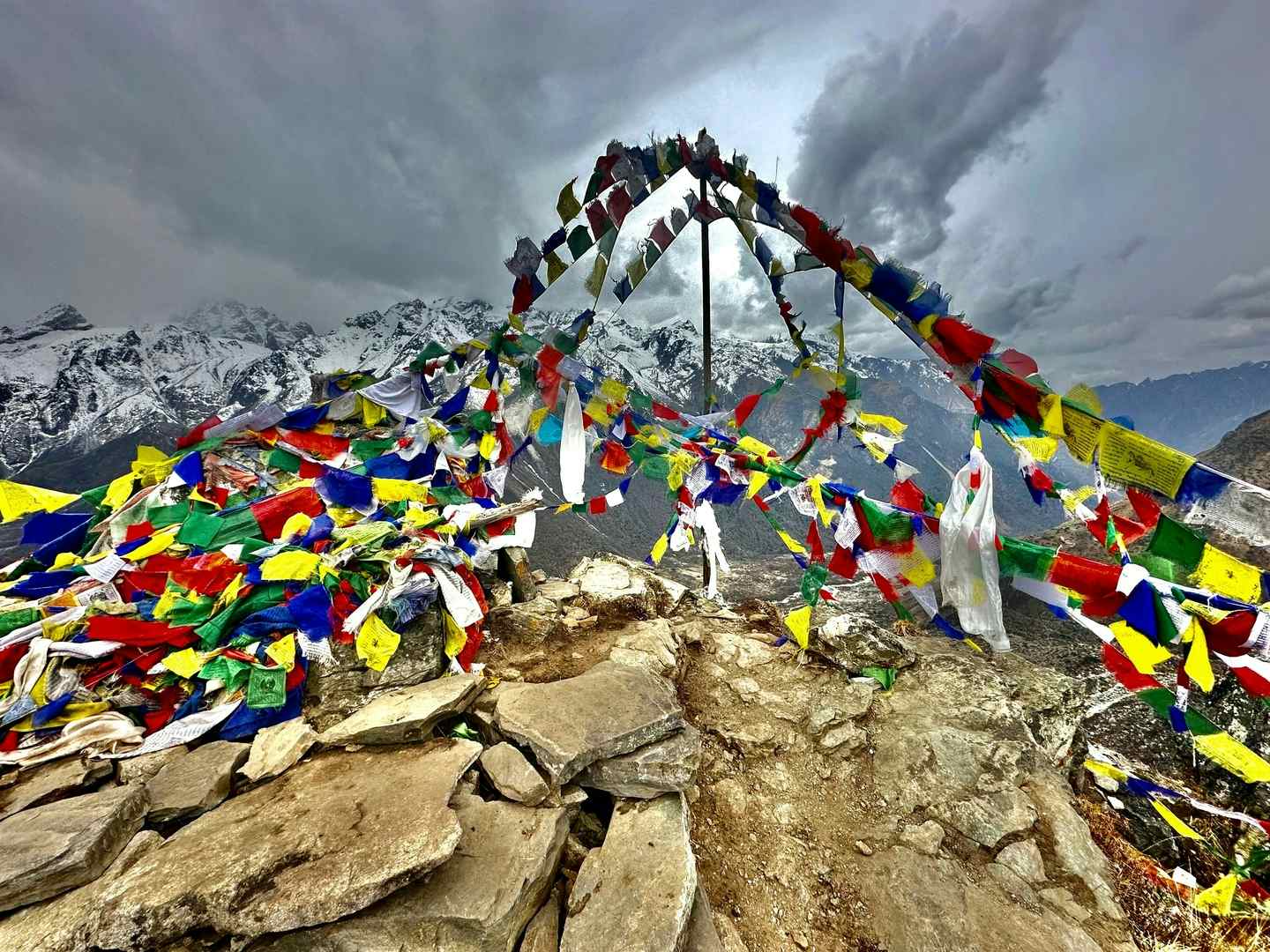
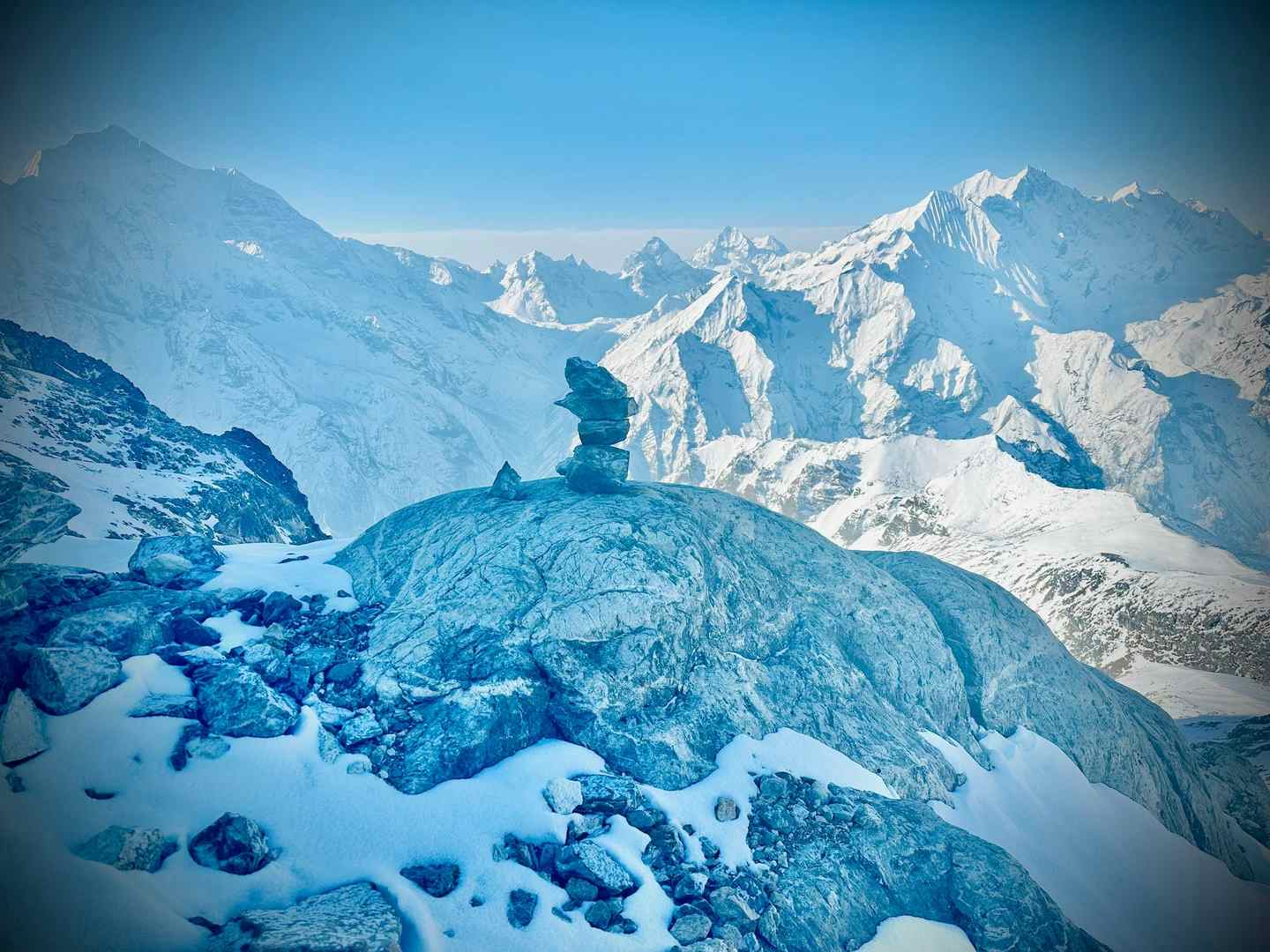
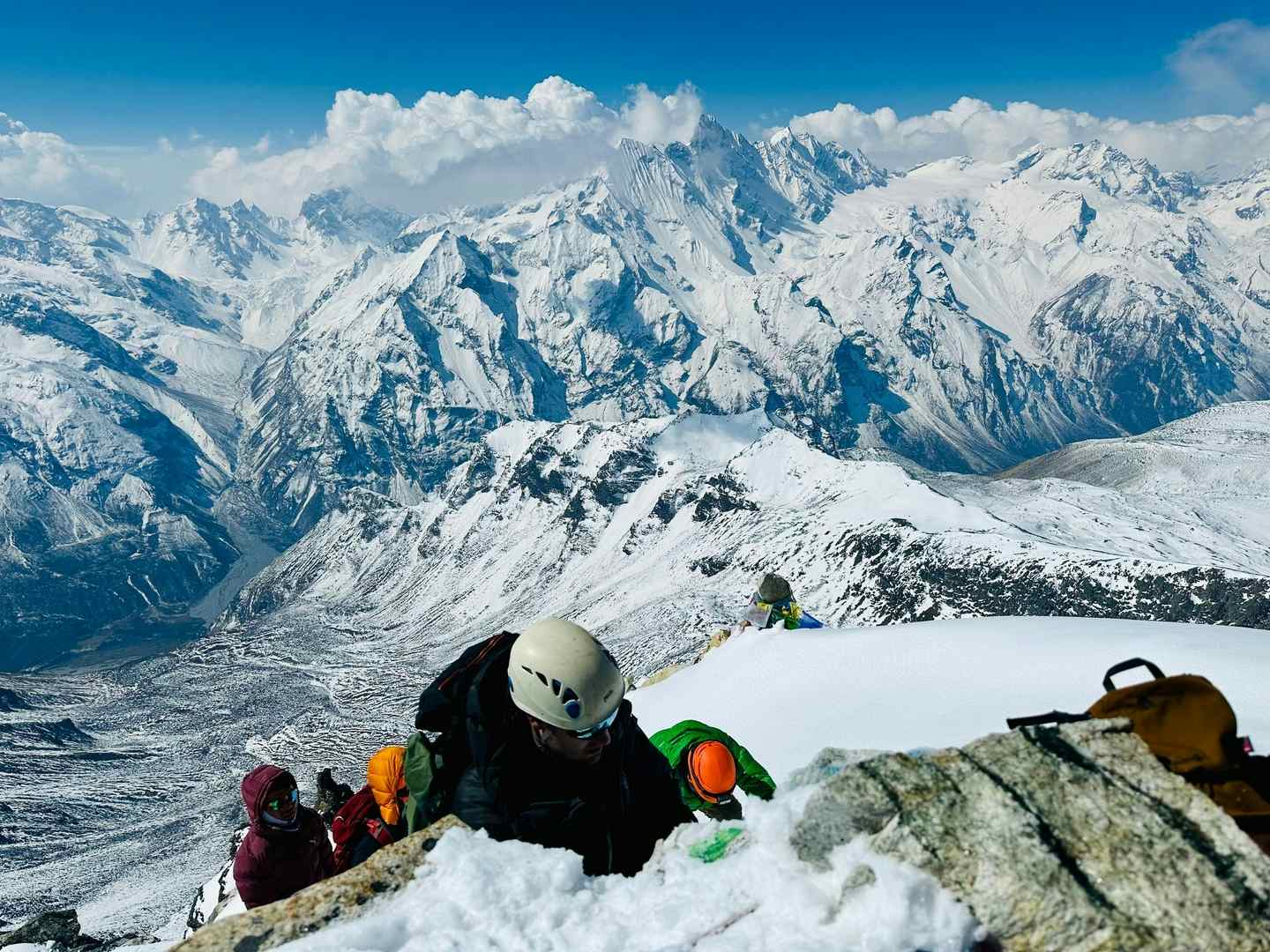
Yala peak is an A+ adventure. It’s not for your typical hiker but for those who want next level experiences this is the trip for you. You must complete over 50 miles of breathtaking views and eventually find yourself in the rare air. It’s tough but one of the most rewarding experiences of my life. The local operators, Freedom Adventures, are completely invested in making the experience the best possible. Personally, I feel Nepal and the Himalayas have changed my outlook of life in a better way and I’m left thinking about my next trip to this magical country.
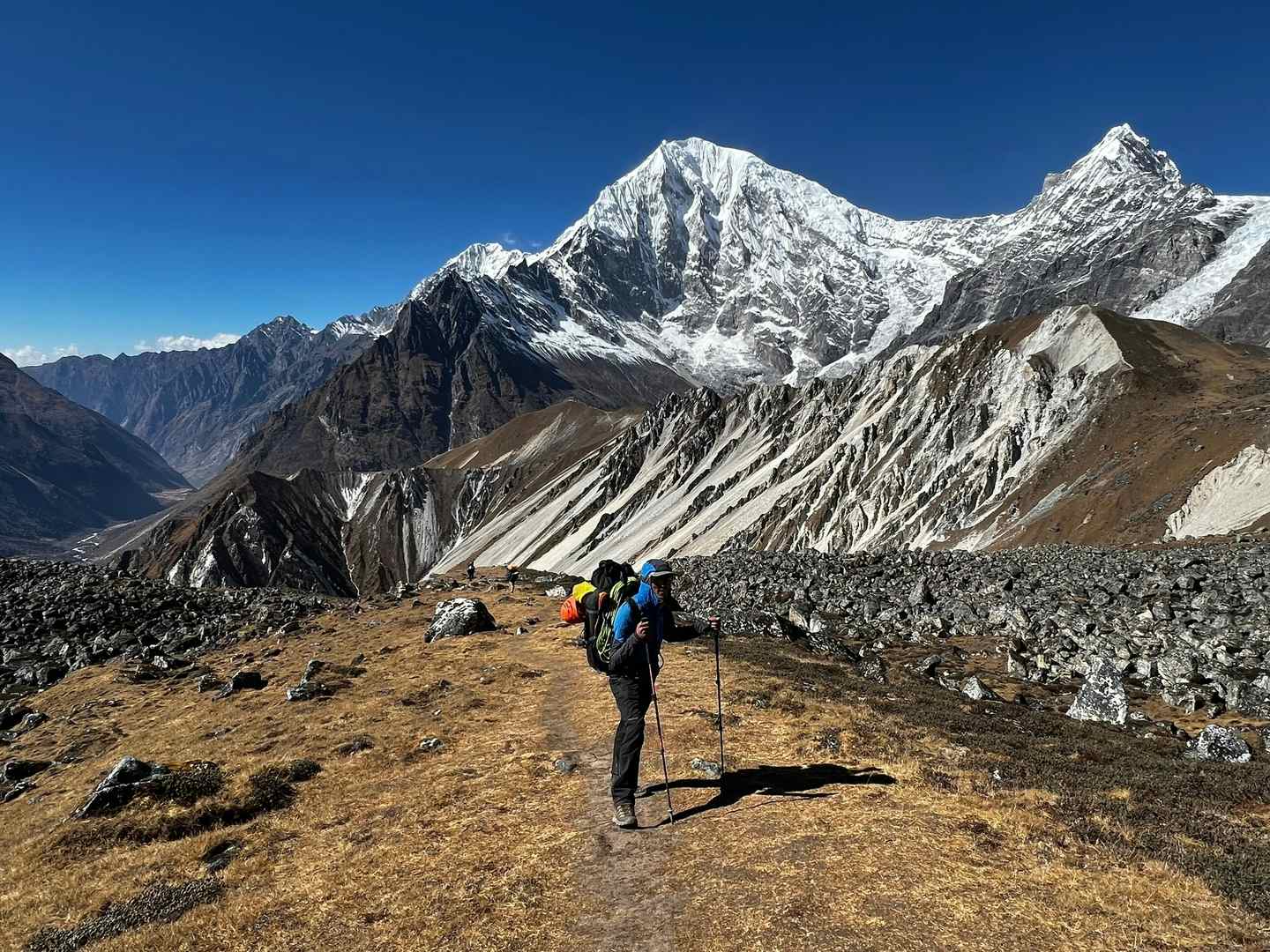
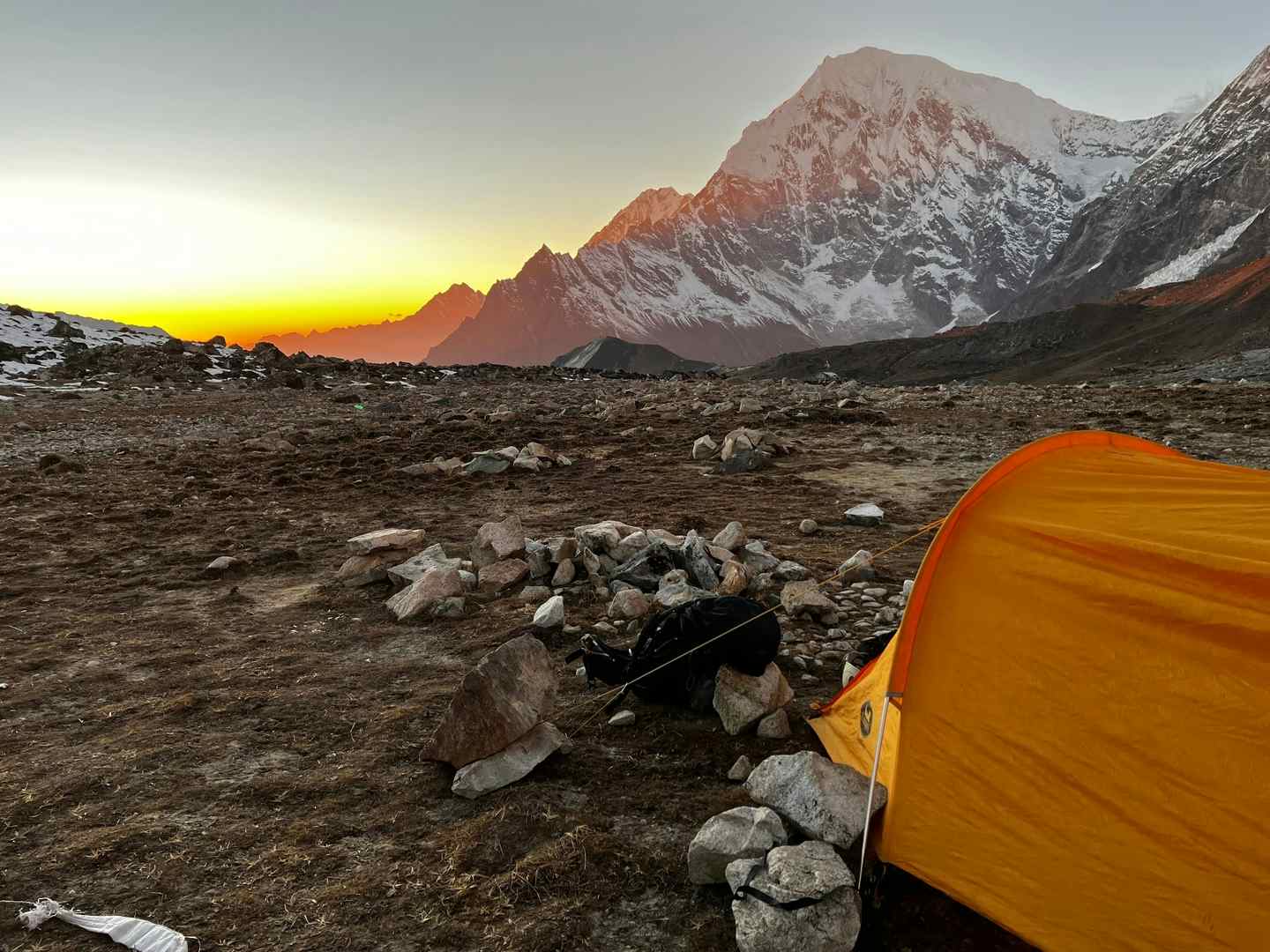
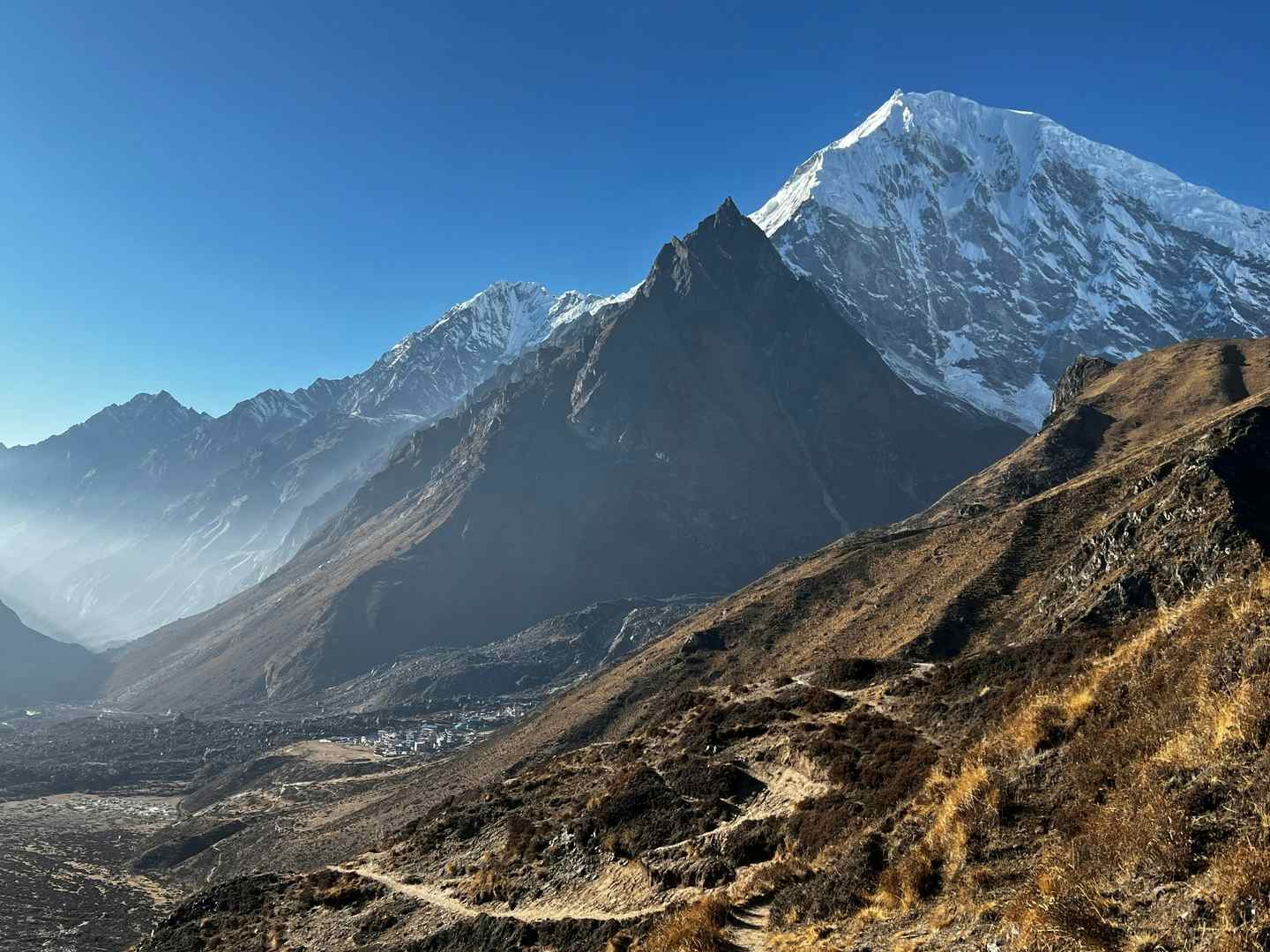
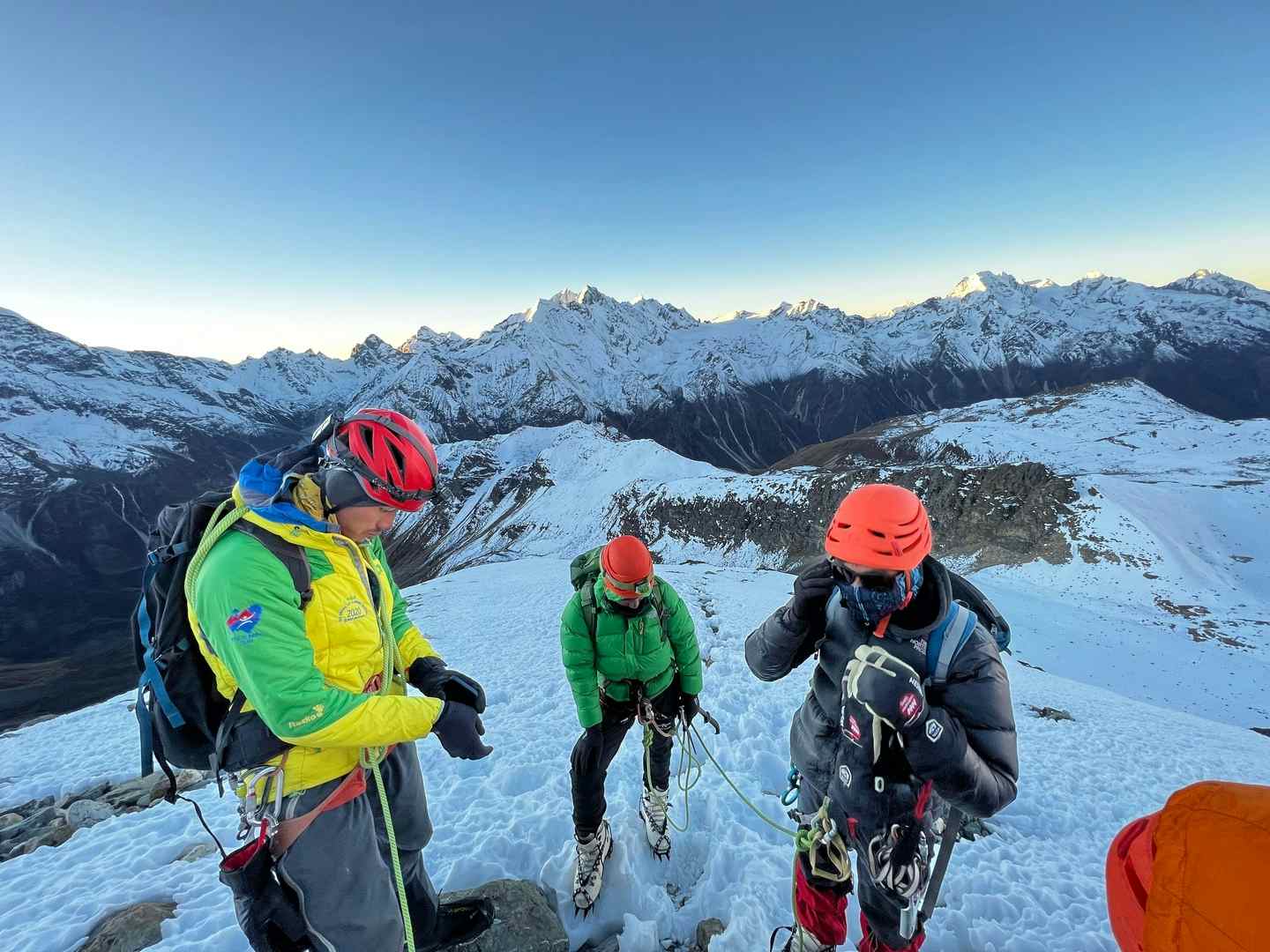
I have just returned from the Yala Peak trip 06-17th November 2022. It was my first time in Nepal and first time to the Himalaya. It has been a dream of mine since I was 15 - and it did not disappoint. I have always been apprehensive about booking onto group trips online and going to the mountains with people I did not know. I was lucky in a sense in that I was going with 1 other - and we actually met prior to departure as it turned out we only live 10 minutes away from each other! So in this sense it actually felt like a private trip/expedition for us. It is hard for me to pick a highlight - the objective was to climb Yala Peak which we successfully completed but without a doubt the whole trip was excellent. I wanted a challenge - and Yala Peak certainly provided this - not technically but the altitude did weigh down on us low landers (Bristol being 11m above sea level!). Aside from this the trip really was a brilliant introduction to Nepal and the Himalaya for me - and has left me hungry for much more. The team provided by my local host was excellent - our main guide Dakman was great and I cant praise him highly enough - a perfect balance for me of not being overbearing but a kind hearted, friendly and knowledgeable bloke who spends his whole life walking these mountains. I dont like to be smothered or waited on hand and foot - but the guide was literally there for any needs which we did have. We were very lucky with our climbing guide Ashok- usually guiding on 8000's and so to have him share some of his time, knowledge and insight with us was a real special bonus. The Langtang Valley is beautiful - in the sunshine the area surrounding Kyanjin Gompa was genuinely up there with the most beautiful and powerful scenery I have ever seen and walked amongst. Whilst I have never been to the Annapurna and Everest areas I have in recent years been put off by the increasing commercialization of that area and the number of tourists that head there. Langtang still has that genuine rural/remote feel to it. There are of course other hikers there but it retains its peace and serenity. I love the fact you get to stay with the real people living a tough life surviving where most would not - quite literally sharing their homes and dining spaces with us. If you want a pampered 5* hotel kind of experience this is not the trip for you. The showers are generally freezing and the toilets stink. If this does not phase you then I would hands down recommend this trip. I will never forget the smiles and the hospitality of the people we stayed with. In particular the girls at Mountain View Guest House Langtang Village. Whilst feeling saddened to witness the site of the tragic landslide that occurred following the earthquake of 2015 that destroyed the original village - their huge smiles, happiness and hospitality was so amazing and the happiness infectious. It really was inspirational and despite the horror of what had happened had rebuilt/were continuing to rebuild their lives. This is a particularly rambling review - I dont think i have quite unpacked/processed the trip in its entirety yet but it really was an amazing experience for me. The saving process begins again from now and I hope to return soon. Thanks to Much Better Adventures and my local host for their parts in organising and putting this trip on.
Yala Peak trip was everything what I hoped so (beautiful area to trek, challenging climb to the top, friendly local people, good food and a lot of good memories). The local host was great (including Krishna who arranged for all transport, hotel etc. and made sure that the trip run smoothly). I fill that I made new friends in Nepal. I struggled with the altitude sickness, but local guides (Dakman, Ashok, Pasang & Asman) were all very supportive and helped me to achieve my dream and reach the Yala Peak!
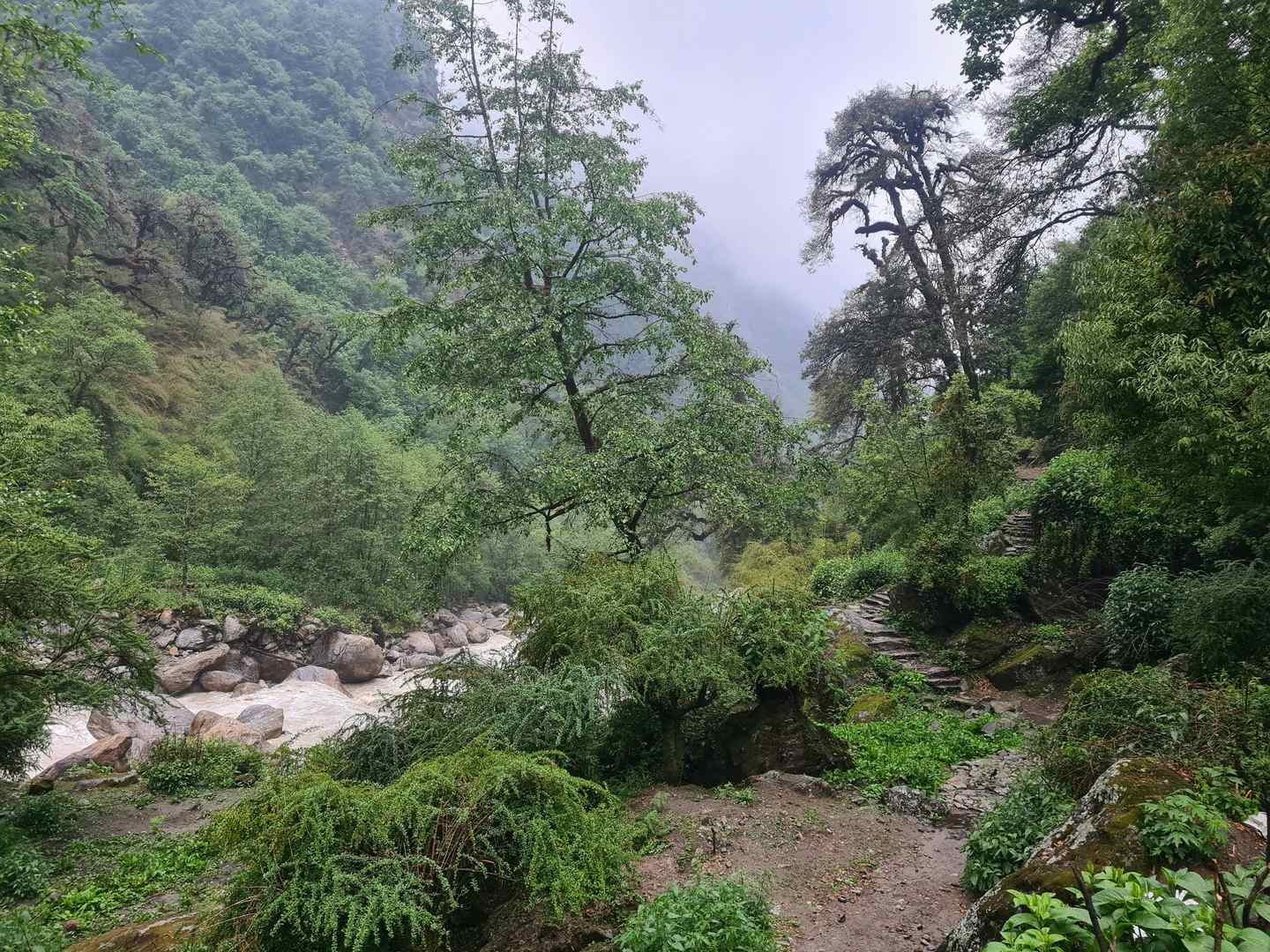
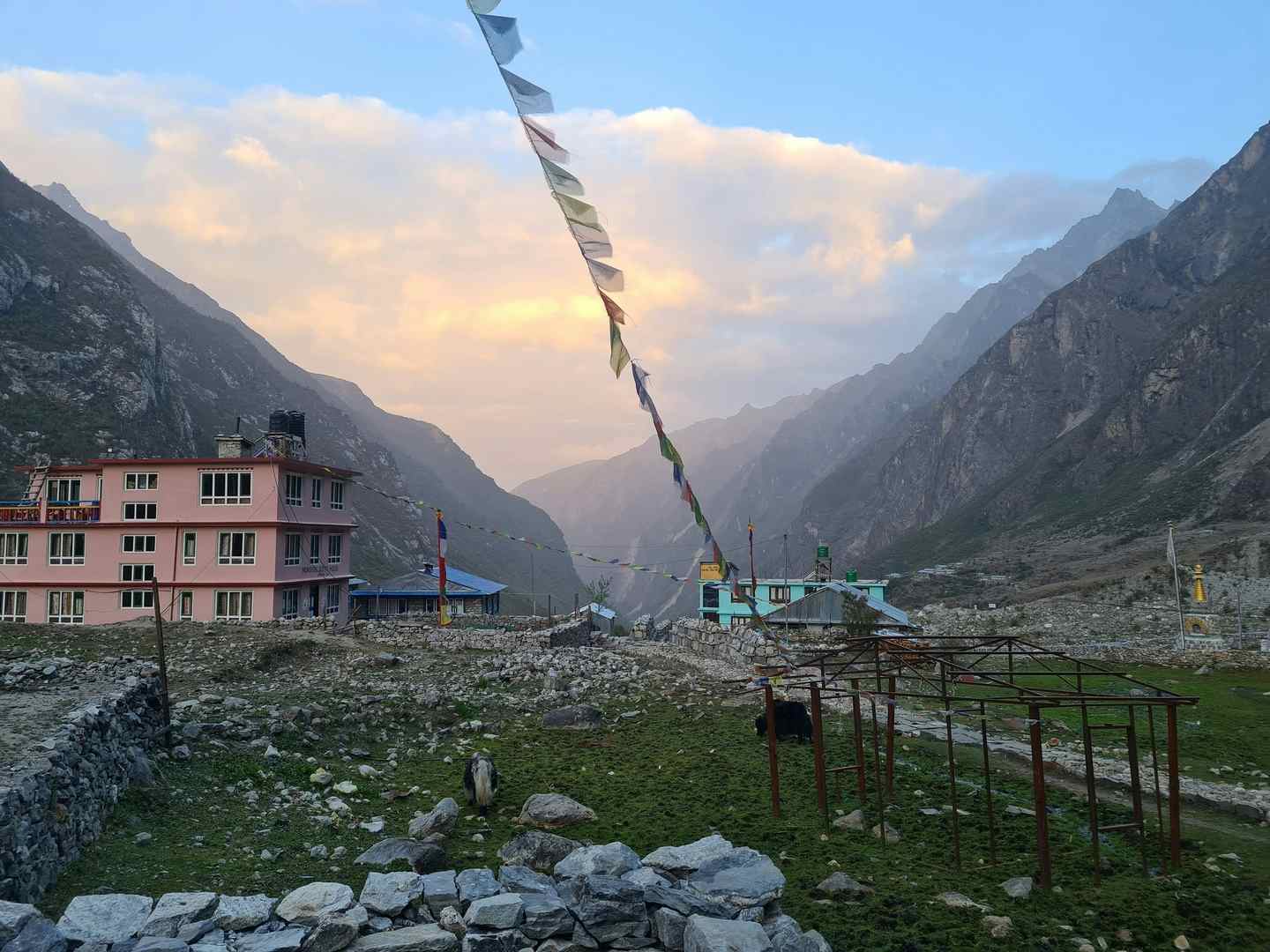
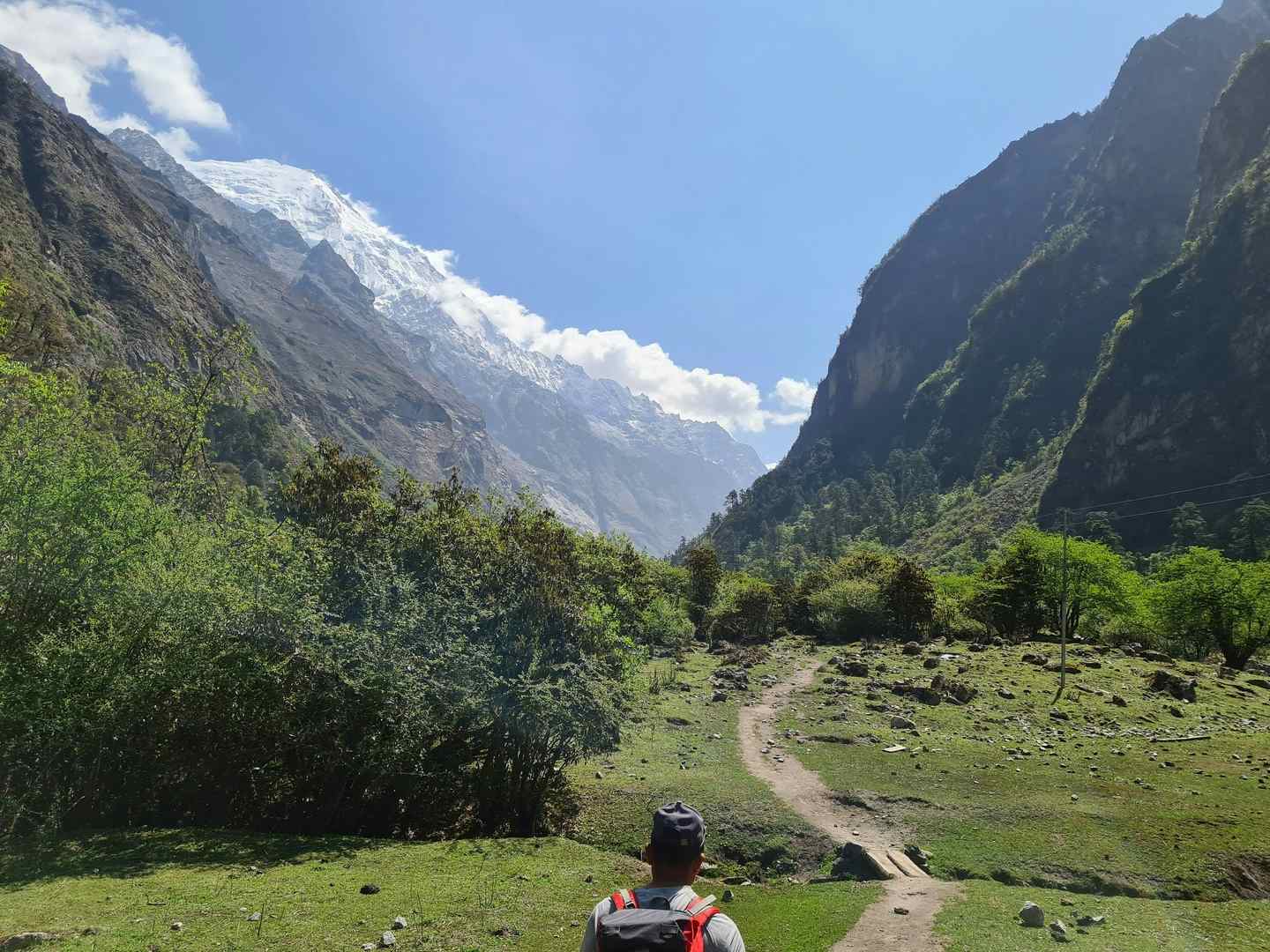
Yala Peak is a brilliant but very hard trip. Starting at 25 degrees and 90% humidity in the low lang tang valley and hiking up to the minus degrees you can see so much of what Langtang has to offer in one trip. I did go in May so the weather may be different for another trip but the contrast is massive. Brilliant views with plenty of time to relax after a long day's hike. I would absolutely recommend this trip to anyone.
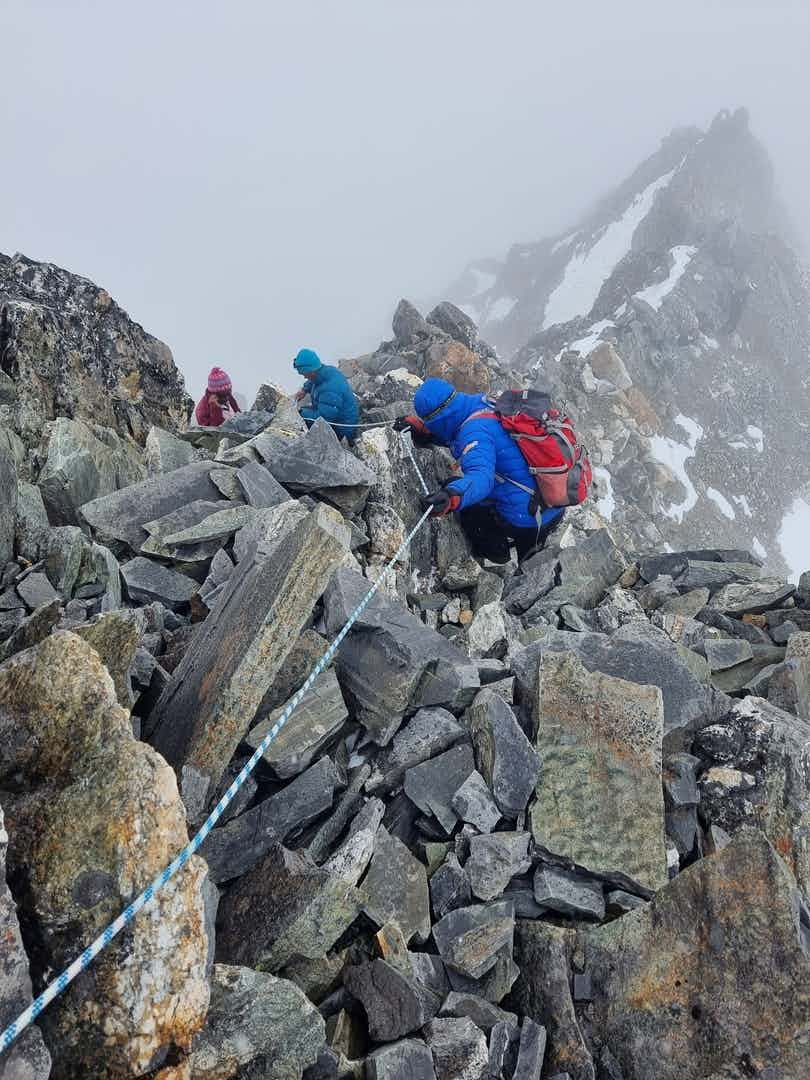
Great trip, tough, but very rewarding
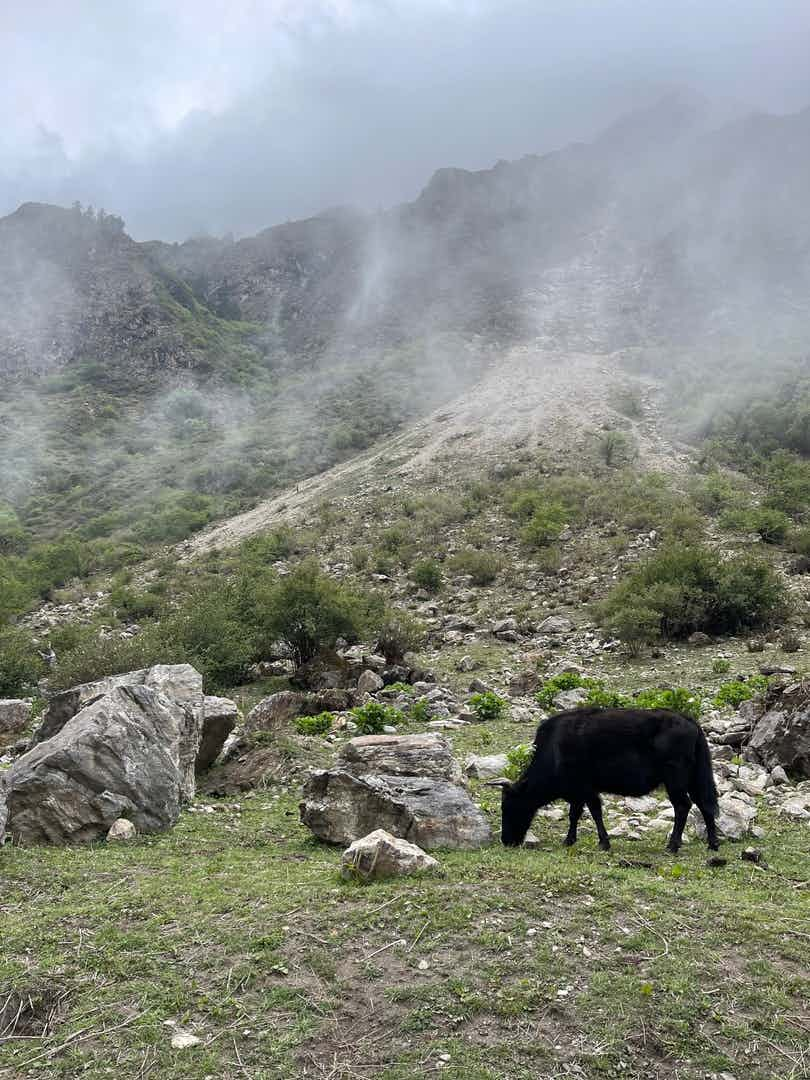
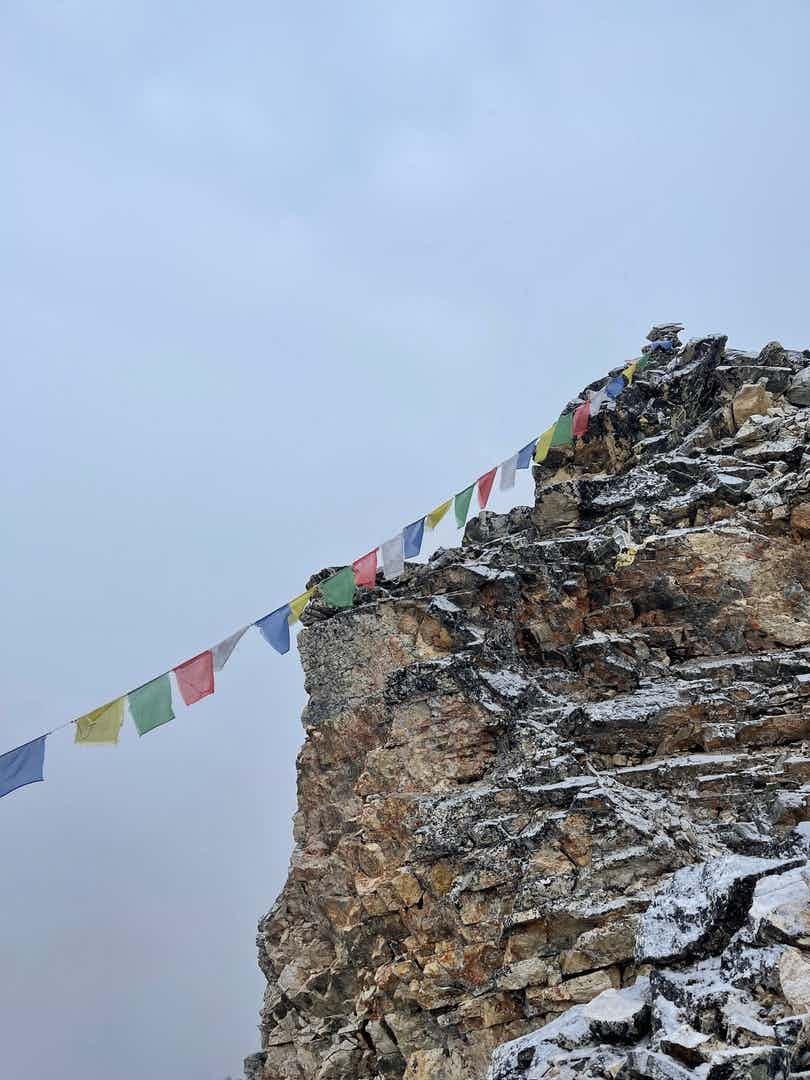
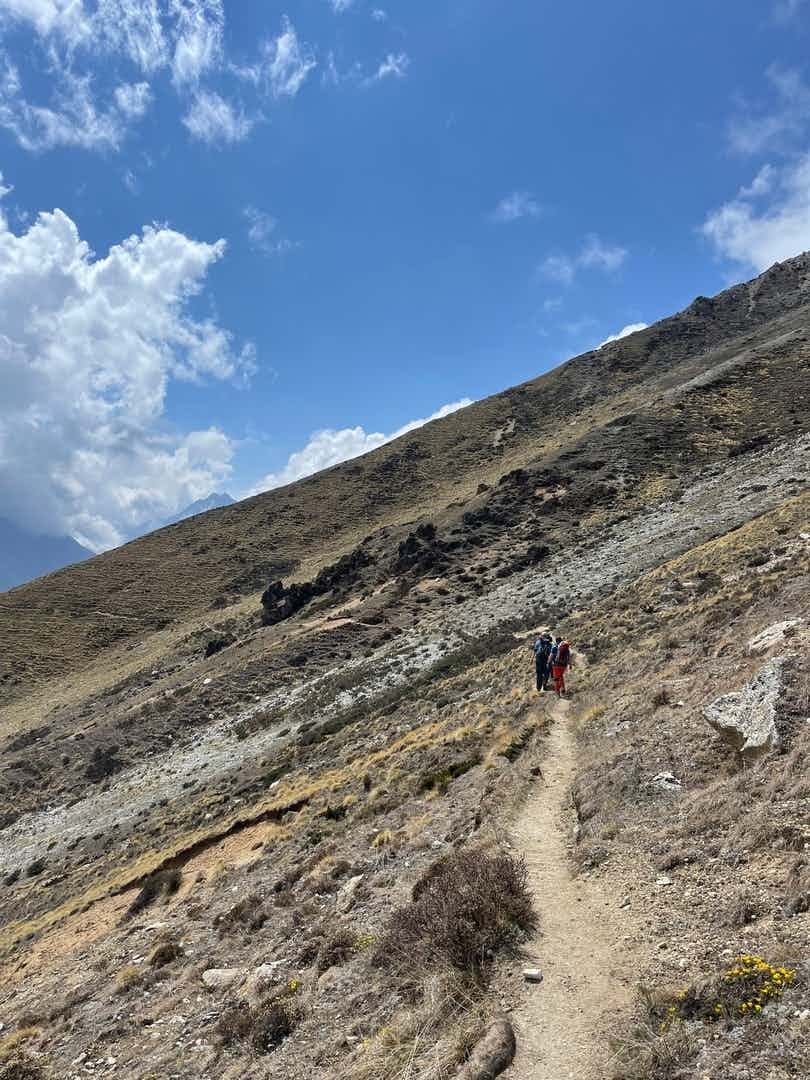
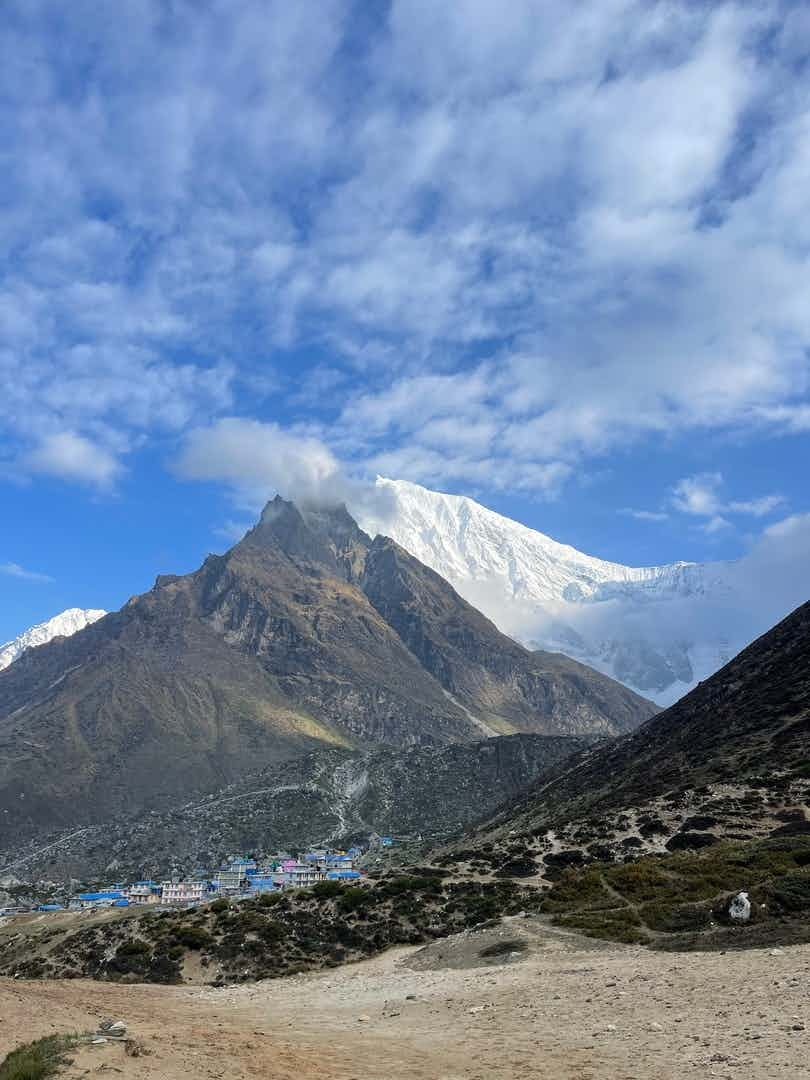
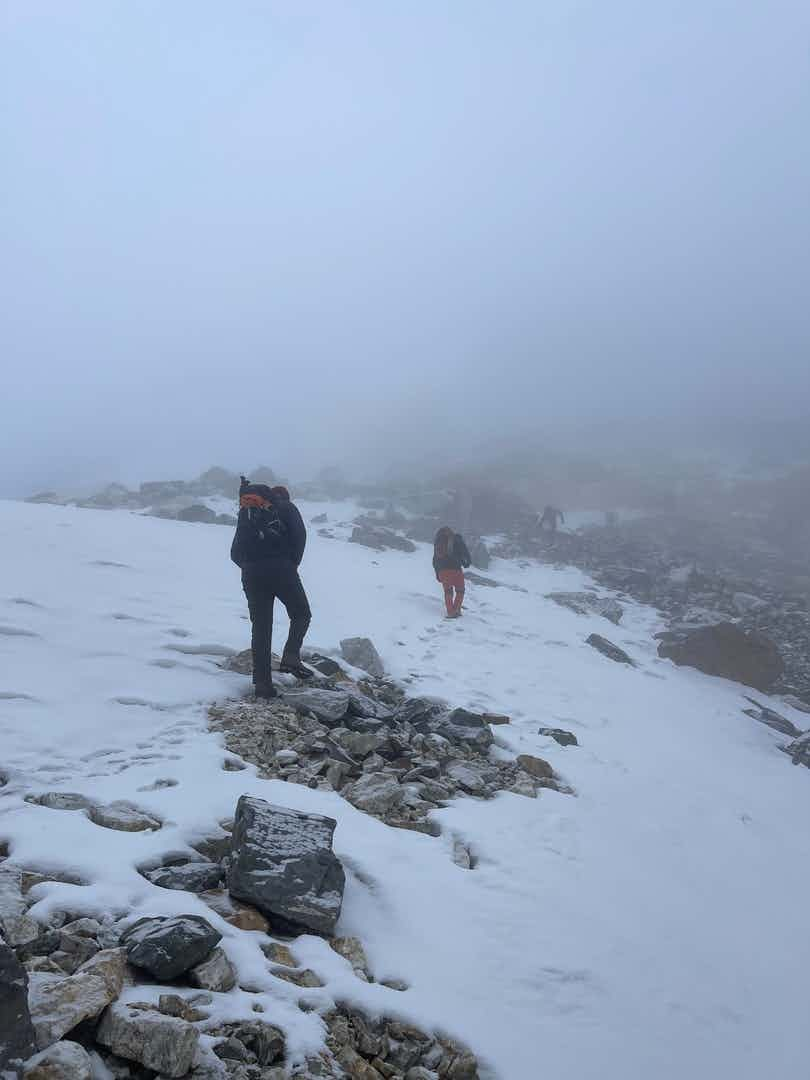
From the tropical heat of Langtang Valley through sacred sites to the breathtaking peaks around Kyanjin Gompa and heaving yourself to the summit, the Yala trip was magical.
Great trip through the Langtang Valley to see the mountains. Never seen such high or beautiful mountains/scenery before! Would absolutely recommend this trip, and combine it with a tour around Nepal before/afterwards. Be prepared for pretty basic conditions in the valley, and have a good level of fitness!
Itinerary Activities
- 7 days of guided trekking in the Langtang Valley
- A guided climb to the 5500m summit of Yala Peak
Guides
- You'll be led by local, expert, English-speaking mountain guides
Accommodation
- 2 nights in a centrally located hotel in Kathmandu
- 8 nights in traditional Nepalese teahouses
- 1 night camping at Yala Base Camp
Meals
- 2 hotel breakfasts in Kathmandu
- 1 breakfast, 2 lunches and 1 dinner at Yala Base Camp
- A welcome dinner in Kathmandu on Day 1
- A farewell dinner in Kathmandu on Day 11
Transfers
- Arrival transfer from Kathmandu Airport
- Departure transfer to Kathmandu Airport
- All transfers during the trip
Porterage
- A porter will carry your overnight luggage on the trek
Equipment
- Crampons, ice axe, ropes, helmet and harness will be provided
Permits
- All your trekking permits and fees are covered and sorted
Our trips are hassle-free by design. We include all the activities and equipment, so you can simply rock up with your rucksack and share the adventure with your new pals.
Travel to and from the trip
Our trips do not include flights, trains or other travel to the start point and back from the end point.
Meals
We do not include meals on the trek, as from experience we know that altitude and physical exercise can mean appetites vary hugely. The cost of food rises as you ascend as it is all carried in by porters and yaks and as you get higher up, very little food can be grown. How much you spend per day will vary according to your choice of meal but generally, people spend between $25-$35 per person per day on meals and hot drinks. Below is an approximate breakdown of some items:
- Dal baht: $4 to $7
- Chow mein: $2 to $4
- Eggs: $2 to $4
- Toast: $1.50 to $3
- Tea/hot chocolate: $1 to $3
- Chocolate bars: $2 to $4
Teahouses will provide cold water free of charge; however it needs to be treated to enable you to drink it. Please read the FAQ below regarding our advice here.
Miscellaneous costs
Other extra costs to be considered are:
Shower: $2-$4
WiFi: $2-5
Electricity: $2-5
Tips
It is customary in Nepal to tip guides and porters. Although it may not be customary to you, it is of considerable significance to the people who will take care of you during your travels. You can give any tips to your lead guide at the end of your trip. This will then be shared amongst the whole team. For full transparency, the lead guide will distribute the tips to the guides and porters in your presence. It is customary for the guides to receive a higher share than the porters as they are more highly qualified.
This particular trip has a higher staff-to-customer ratio than other Nepal treks and more porters in order to carry the climbing equipment, so a good rule of thumb is around $170pp as a tip, although the amount you give is entirely your choice.
If you would like to give an additional tip to a member of the team who has supported you personally, please do so directly and discretely.
Personal Expenses
You know your own spending habits best, so please budget an appropriate amount for things like optional meals and drinks, shopping, optional activities, and laundry.
Travel insurance
Travel insurance is compulsory for all of our adventures and you are required to provide your policy information before departing. Your insurance should include adequate protection for overseas medical treatment, evacuation/repatriation, your baggage and equipment and the specific activities involved on your adventure. We also strongly recommend it includes cancellation and curtailment insurance, should you be unable to join your trip for specific reasons such as illness. Our recommended travel insurance provider is Campbell Irvine, as their insurance offers all of the above.
Owing to the nature of this trip, it is essential that your personal travel insurance policy provides cover to the maximum altitude visited on this trip (5500m), as well as for emergency medical evacuation by helicopter.
Visas
Visa requirements often change, and you are responsible for obtaining any required visas for this trip. Please check with your nearest embassy or consulate for up-to-date advice.
What's provided?
- All climbing equipment: ice axe, ascender, descender, climbing helmet, harness, carabiners, crampons (ice axes and crampons are generally only required on winter climbs from December to March, but your porter will carry them just in case). Please note, you'll need to bring your own climbing boots (see shoes section below).
- Whilst a harness is always provided locally and included in the trip equipment, if you happen to have your own it is better to bring it to ensure the best comfort and fit.
What do I need to bring?
- Day pack with rain cover (35 litre +)
- Rucksack or duffle bag (for the porters to carry your overnight kit)
Clothes
Mountain environments are notoriously unpredictable. A layering system works best so that you can put on and remove items to adjust your temperature. You'll need to be equipped for all eventualities, although you won't necessarily need to use everything if you're lucky with the mountain conditions.
- Waterproof jacket (windproof)
- 3- to 4-season down jacket, with hood
- Waterproof and windproof overtrousers
- Lightweight trekking trousers
- Thermals (top and bottom, wool or synthetic)
- 2/3 trekking t-shirts/shirts
- Fleece or warm mid-layer
- Warm gloves
- Hiking socks and merino liners
- Woolly hat
- Sun hat/cap
- Spare underwear
- Buff or similar
- Something to sleep in
Shoes
- Worn-in, waterproof hiking boots (with ankle support). While B1 boots (crampon compatible) are suitable for the climb, they are not good enough for extreme weather conditions. It is recommended to contact your host at least one month prior to your trip for specific guidance on the appropriate footwear. If you do not already have B2 boots and are thinking of purchasing them, climbing enthusiasts may find it beneficial to invest in B2 boots. However, if you prefer not to make the purchase, renting B2 boots in Kathmandu is also a viable option.
- Lightweight trainers (for the evenings)
- Flip-flops or sandals
Sleeping
- 4-season sleeping bag with hood (with a comfort rating down to around -20°c)
- Sleeping bag liner (a good liner can add a few degrees extra warmth)
- Pillowcase (optional)
Other
- Trekking poles
- Travel towel
- Sun protection and lip balm (high SPF: 50+)
- Sunglasses (UV blocking, ideally with a 'wrap-around' design)
- 2 x 1-litre water bottles (metal SIGG bottles can double up as hot water bottles at night)
- Headtorch (LED recommended)
- Earplugs (for the teahouses)
- First aid kit and/or personal medication
- Water purification tablets/system
- Biodegradable wet wipes
- Hand gel
- Small biodegradable bags to take toilet tissue off the mountain
- Toilet paper/tissues
- 1 x passport photos for trek permits
- Powerbank/solar charger
- Universal plug adaptor
- Book/Kindle/cards for downtime
Please remove all unnecessary packing before you leave home and ensure you take all plastic off the mountain to be disposed of in Kathmandu.
What's available to hire?
The below can be rented in Kathmandu:
- Down jacket: approx. $1.5/day with a deposit of $50
- Sleeping bag (3-season only available): approx. $2/day with a deposit of $80
(Please ask your host if this is needed so they can assist you with how to arrange the hire.)
What can you buy in Kathmandu?
Kathmandu has many outdoor gear shops - some with kit that is the same price you will find it at home and some are filled with cheaper imitation gear that may not be of the same quality. You will, however, find a soft duffel bag easily that the porters can carry.
Weight restrictions
There will be one porter for every person on this trip. They will each carry up to 20-25kg of kit (including your climbing gear). Please pack no more than 15kg per person of personal clothing/items (including your sleeping bag) in a soft backpack or duffel bag, allowing for the climbing equipment to make up the remainder of the porterage limit. You will only need to carry a daypack with essentials in (an extra layer, snacks, water, suncream, camera etc).
Optional Private Room Upgrade (Kathmandu x 2 nights)
Payable Before Departure
Optional Private Room Upgrade (Kathmandu x 2 nights)
…
Pre/post-trip accommodation in Kathmandu (Single)
Payable Before Departure
Pre/post-trip accommodation in Kathmandu (Single)
…
Pre/post-trip accommodation in Kathmandu (Twin/Double)
Payable Before Departure
Pre/post-trip accommodation in Kathmandu (Twin/Double)
…
We partner with the World Land Trust to ensure this trip achieves Net-Zero emissions. We also support their Buy an Acre programme, helping local communities to buy and protect natural habitats in perpetuity.
What's the number?
It works out on average at 343kg of CO2 emissions per person, including all local transport, accommodation, food, activities, guides, staff and office operations.
The only thing it doesn’t include right now is flights and travel to the destination. We do make an overall estimate across all our customers separately, but as we don’t book flights, have customers from all corners of the world, and no way of reliably knowing their travel plans, we simply can’t include an individual number in the figure on display here. We’ve got a goal to fix that, so that when you book, there is a way to measure and mitigate the carbon emitted by your flight too.
But what does the number mean?
Yep, hard to picture eh? To give you an idea:
- Driving 1000 miles/1609km would be approximately 281kg of CO2 in an average car (or 140.5kg per person, if there were two of you in it).
- A return economy class flight between London and New York would be approximately 1619kg (1.66 tonnes) per person.
- 10 trees in a temperate forest are estimated to remove approximately 250kg of CO2 from the air in a period of 5-10 years.
What are we doing about it?
Our trips are relatively low-carbon by design, and we're working with all our hosts to develop long term carbon reduction plans. We partner with the World Land Trust to ensure this trip achieves Net-Zero emissions. We also support their Buy an Acre programme, helping local communities to buy and protect natural habitats in perpetuity, ensuring the protection of the reserve and its wildlife.
Want to know more?
Amazingly, no international travel company has ever publicly published their carbon measurements before, as far as we know. We believe that must change, quickly. So we’re openly sharing the method we used in the hope that other companies will be able to more easily follow suit and build on what we've done so far. You'll find it all here.
From the start of 2026 onwards, the trip duration will be one day longer, making it 12 nights and 13 days. The 2026 and 2027 departure dates displayed already reflect this duration change.
The additional night will give two nights at Yala Peak Base Camp (instead of only one night) to further acclimatise before summit day. Depending on the conditions, there will be an acclimatisation hike to Tserko-Ri (4984m) or a nearby pond, plus skills training and equipment checks.
The preferred currency is the Nepalese Rupee (NPR). Whilst ATMs are available in the main cities, please do not rely on them as they are often out of order and most have a maximum withdrawal limit equivalent to about £300.
It's best to bring the bulk of your money with you in cash and exchange it at a bank or at one of the many money changers in Nepal - your guide will help you with this. Most major currencies are accepted, including GBP (Sterling), Euros and US Dollars, however Scottish or Northern Irish currency cannot be changed. Keep your exchange receipts in case you want to change any unused Rupees back into hard currency when you leave Nepal (it is illegal to export Nepalese Rupees as it is a closed currency).
You will need to carry a fairly large amount of cash while trekking, for the meals (see 'Not Included', above). We advise that you keep this in a waterproof bag and in your day bag along with your passport.
We work with some of the best leaders in the industry. Every single one of them is government licensed and very experienced. In order to ensure the guides high standard of performance, the host provides them with top-notch in-house training that covers advanced wilderness first aid, hyperbaric chambers, oxygen system, mountain rescue and incident management and Leave No Trace (LNT) principles.
Although we schedule departure dates outside of the main monsoon season, weather conditions in any mountain region can be unpredictable and sometimes your host will need to revert to 'Plan B'.
No two trekking seasons are the same, but occasional landslides or heavy snowfall and avalanches have been known to lead to trail closures in this region. In this event, it will not be possible to reach Yala Peak or summit a peak and your host will organise an alternative trek: usually the Laurebina La to Gosainkunda.
As you are summiting a peak in mountainous terrain, it may be that the weather isn't perfect – if this is the case, you are likely to get another chance to summit the next day. So to play it safe, we advise you to consider booking an extra night’s accommodation in Kathmandu at the end of the trip.
You can leave any extra luggage that you don't need on your trek at your hotel in Kathmandu.
There will be one porter for every person. They will each carry up to 20-25kg of kit (including your climbing gear), so your overnight bags will be transported for you. Please pack no more than 15kg per person of personal clothing/items (including your sleeping bag) in a soft backpack or duffel bag, allowing for the climbing equipment to make up the remainder of the porter's weight limit. You will only need to carry a daypack with essentials in it (extra layers, snacks, water, suncream, camera etc).
We’ve sourced some great optional activities for you to do in and around Kathmandu, should you wish to explore that little bit further. Please discuss these directly with your host who will be able to book them for you.
Cook Like a Local: This short cooking workshop (approx. 3 hours) teaches you how to cook popular Nepali dishes like momos and dal bhat. You’ll meet your teacher and accompany them shopping, then head to the kitchen and learn to cook alongside them. Price: pay what you think the workshop is worth!
Shop Local: A 2-3 hour guided exploration of the markets of Kathmandu. Prepare to learn about the vendors that line the crowded narrow alleyways and to witness everything you could ever imagine being sold, haggled and bargained for. A great experience to learn about the melting pot of cultures that exist in Kathmandu. Price: $9-$50pp, depending on the group size.
Master of the Arts: Patan Durbar Square is popular for its Fine Arts and this trip will explore the local factories where handicrafts are made. You’ll visit 2-3 factories and learn about traditional processes and see art being produced. Price: $14-$59pp, depending on the group size.
Introduction to Shamanism: Shamanism, which is believed to heal many diseases, is not practised widely these days however this trip enables you to meet a practising Guru and learn all about this age-old tradition. You’ll visit a small house to have an introduction, followed by lunch and a drumming session where you’ll learn the importance of rhythm pattern to healing. Price: $90-$150, depending on group size.
Although most teahouses have the option to buy bottled water, we advise against it to reduce the use of plastic in the mountains (this ends up being burnt, or dumped in landfill out of sight). You will instead be provided with cold water that needs treating. There are a wide range of products available these days which are more effective than traditional purification tablets – some trekkers like to use UV handheld devices such as a Steripen, but other options are available (just check that they perform in freezing conditions).
Whilst there are no domestic flights included in this itinerary, should you choose to add one to your booking as an additional service you should be aware of the following:
Nepal's mountainous terrain and weather make for challenging flying conditions and sadly more incidents (including fatalities) occur here than in other countries. Since 2013 the EU has banned all Nepalese domestic airlines from flying within EU airspace in order to raise awareness of the poor safety record (although no Nepalese airlines were operating routes within the EU prior to the ban). You should be aware that flying in Nepal is an identified risk: please consider this carefully before booking. Additional information can be found on the Aviation Safety Network entry for Nepal as well as the UK Foreign, Commonwealth and Development Office travel advice for Nepal.
Domestic airlines in Nepal are generally not accredited by any internationally recognised safety audit systems and the Civil Aviation Authority of Nepal does not operate to the same standards as those of Western nations.
What does Much Better Adventures do about this?
Much Better Adventures collaborates with other UK travel companies to arrange for independent air-safety auditors to visit Nepal annually and assess the local airlines. Much Better Adventures then only uses the carriers that were approved as part of the most recent audit. If any concerns are subsequently raised about an approved airline between audits, we put them on hold until the auditors are satisfied that safety standards are being met.
Owing to the nature of this trip, it is essential that your personal travel insurance policy provides cover to the maximum altitude visited on this trip (5500m), as well as for emergency medical evacuation by helicopter.
This trip includes locations or elevations where conditions can be extremely cold. Daytime temperatures may drop below freezing (0°C/32°F), and nights are often significantly colder. These conditions can affect physical performance and increase the risk of exposure-related issues, such as frostbite or hypothermia.
Your guide is trained to manage these risks, adapting activity intensity and monitoring group wellbeing. However, it's important to take personal responsibility – bringing the right cold-weather gear (see Kit List), staying hydrated and well-nourished, and recognising early signs of cold stress.
We recommend assessing your personal comfort and resilience in cold environments, and consulting a medical professional if you have health conditions that may be affected. Arriving early can also help you acclimatise to the colder conditions, especially if you're coming from a much warmer climate.
This trip reaches elevations above 4500m, where the risks associated with Altitude Sickness (AMS) are higher, and where more serious conditions like HAPE (High Altitude Pulmonary Edema) and HACE (High Altitude Cerebral Edema) can occur.
Previous high-altitude experience doesn’t guarantee the same reaction every time, but it can be a helpful indicator. It gives you insight into how your body might respond, helps you recognise symptoms early, and prepares you mentally and physically for the demands of high-altitude trekking.
Your guide is trained to manage altitude risk by carefully managing the rate of ascent, monitoring group wellbeing, and taking action if anyone becomes unwell.
Before travelling, think about your own physical condition and consult a medical professional if you have concerns – especially if you have underlying health issues. If possible, arriving a day or two early at altitude is a great way to help your body adjust.
Your travel insurance must cover the maximum altitude reached on this trip and include emergency evacuation.
Sure can! Over 70% of our travellers travel solo, it’s a great way to meet like-minded people.
Our team of Adventure Hunters co-create exclusive adventures which are run by highly vetted, specialist hosts. The trip is run by our trusted host partner in the destination. We only work with independent, local, in-destination experts who know the very best places to explore and how to stay safe. Read more information about the local teams we partner with. You’ll be introduced to the host straight after making a booking via the Much Better Adventures platform.
Much Better Adventures refer to the UK Government’s official travel advice when designing trips and monitoring trip operations. We recommend that all customers are familiar with the practical information provided on the Government’s FCDO website, where current travel advice can be found by searching for the applicable destination(s).
For customers joining this trip from other international destinations – please also read the official travel advice applicable to your country of residence/origin, as this may differ.
We recommend checking out the country-specific information and also talking to a travel nurse.
We automatically convert prices from the local currency that a host receives to your chosen currency. We update our exchange rates on a daily basis so this does mean that prices displayed on the site are subject to currency fluctuations, which is why you may see them change over time.
If you wish to change the currency you pay in, head to the bottom of the page.
All of our group adventures are specially designed for adults to enjoy as we want these adventures to bring together outdoorsy people who are truly like-minded. You must be over 18 to join one of our trips.
You're always in good company on one of our adventures.
Our trips are typically made up of a mixture of solo travellers and small groups of 2 or 3 friends, with most in their 30s-50s.
Our sociable adventures are solo-friendly by design and naturally attract outdoorsy people with a shared mindset; a love for adventure, a desire to push themselves and meet awesome, like-minded people along the way.
It’s this camaraderie that has so often turned a great adventure into a life-changing one.
Don't just take our word for it:
- 95% of people rate the group dynamics on our trips 5/5
- 90% of people recommend joining a trip to make new friends
- 75% of people have met people on our trips that they would now consider friends
See here for more info about the Much Better Adventures tribe.
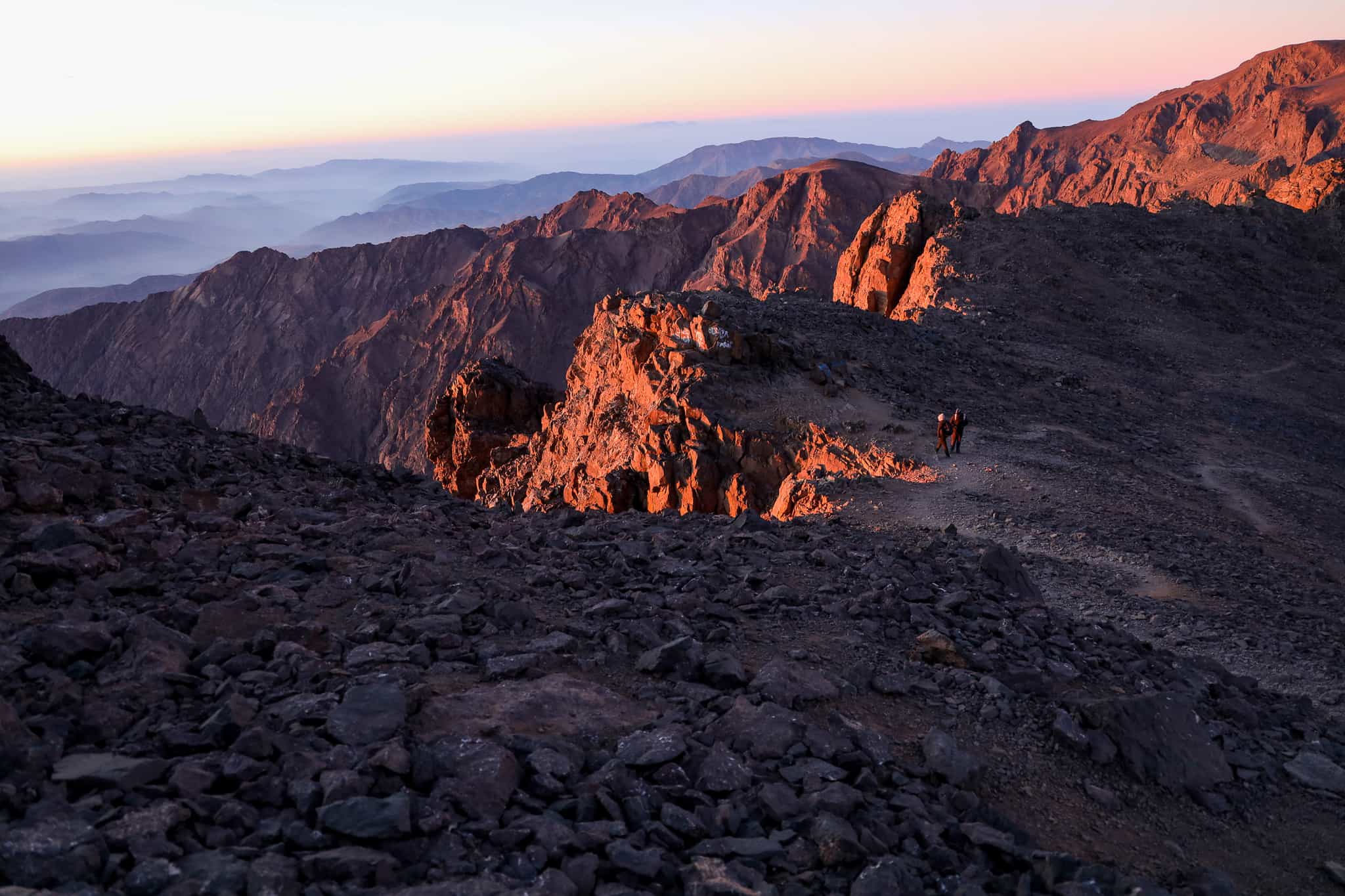
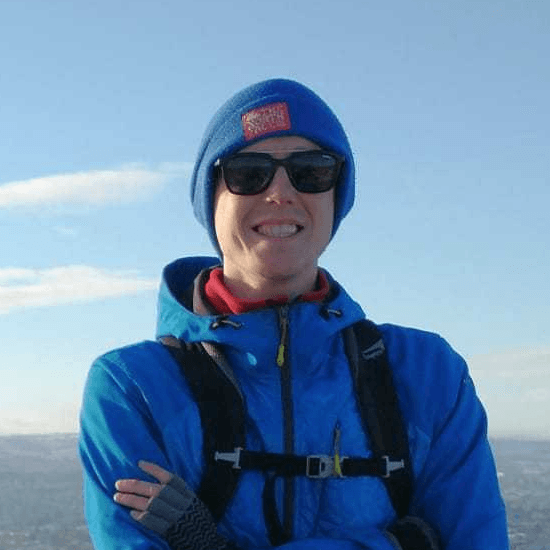
Need help finding flights?
From logistics and how to get there, to fitness, group dynamic and trip difficulty, Rory and his team of friendly experts are on hand to help.
We've got your back
Guaranteed to run
All Much Better Adventures trips are now guaranteed to run. Once you’ve booked your spot you can immediately make your travel arrangements, no uncertainty, no hanging about (excludes 'request to book' departures). Full details
Flexible payments
Secure your spot with the minimum deposit and pay off the remaining balance in as many instalments as you like, with no interest or fees. Full details
Happiness Guarantee
We’re so confident you’ll have an amazing time we’ll put our money on it. Full details
Full financial protection
To give you complete peace of mind Much Better Adventures is backed by ABTOT, ABTA and ATOL memberships. Full details
Tried & Trusted
Much Better Adventures is rated ‘Excellent’ on Trustpilot with over 1000 verified trip reviews averaging 4.8/5.
Connect before you go
You'll be invited to join a WhatsApp group to get to know each other before your big adventure together. Full details
DEPARTURE DATES
Sunday 21st September 2025
to Thursday 2nd October 2025
